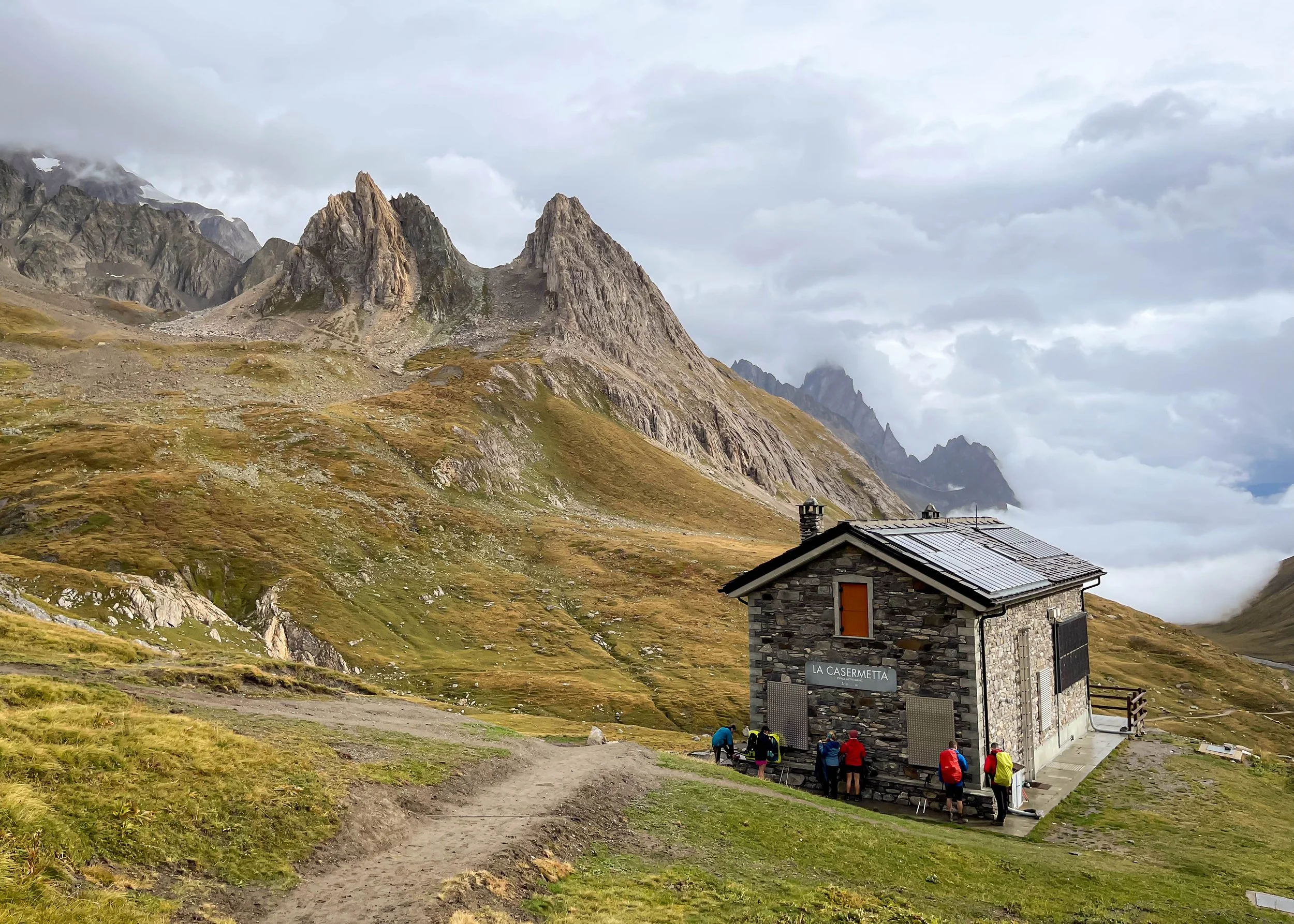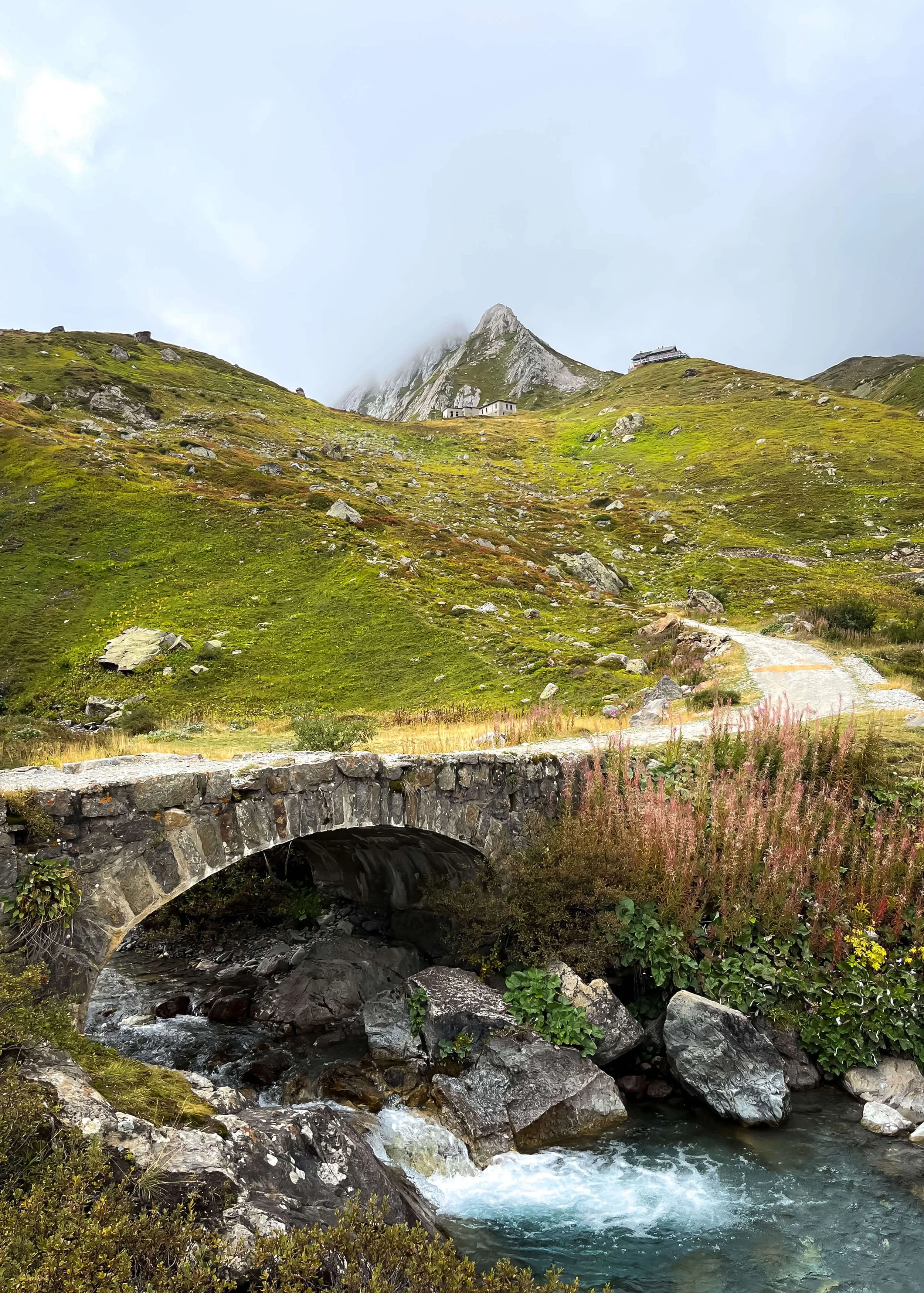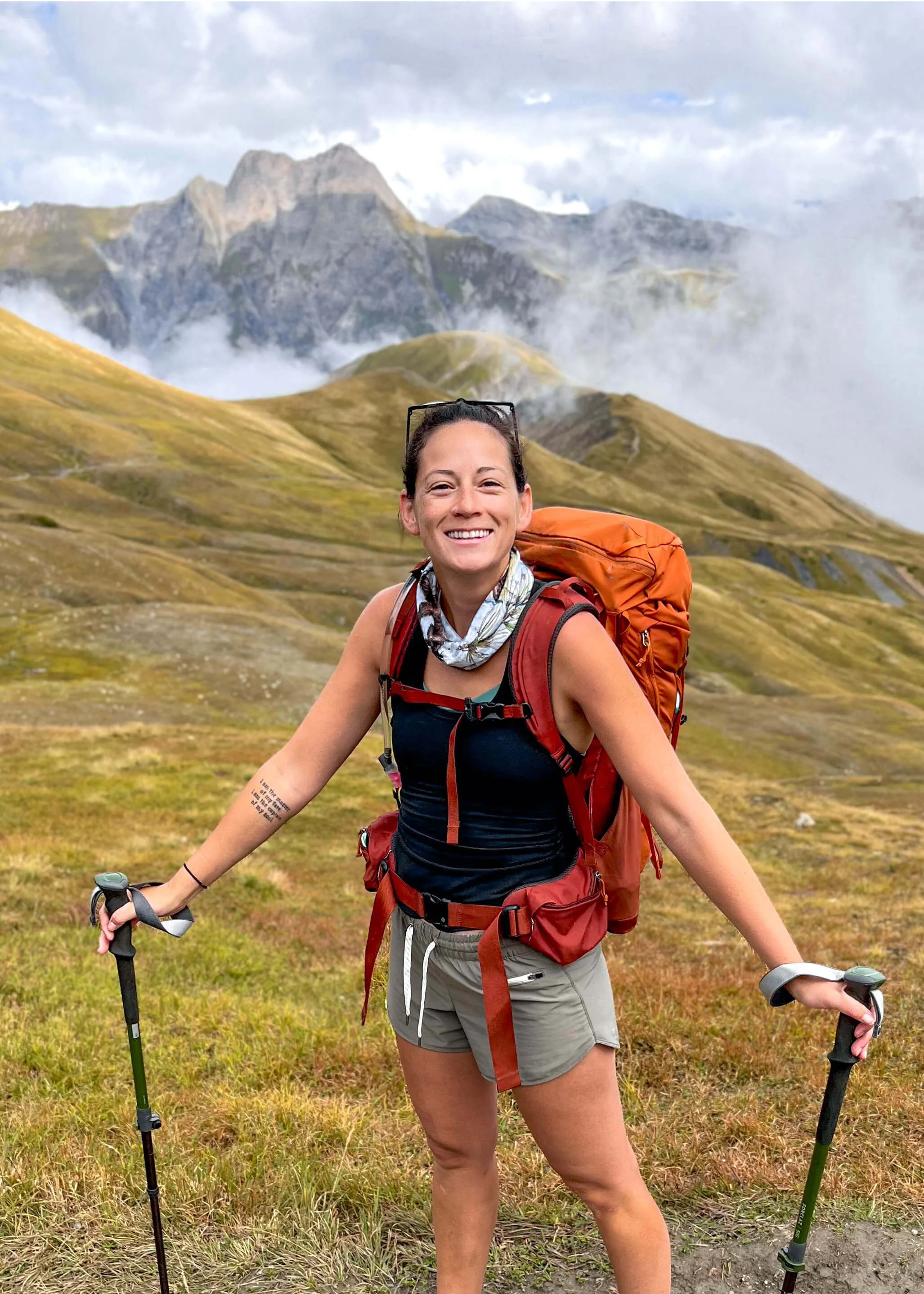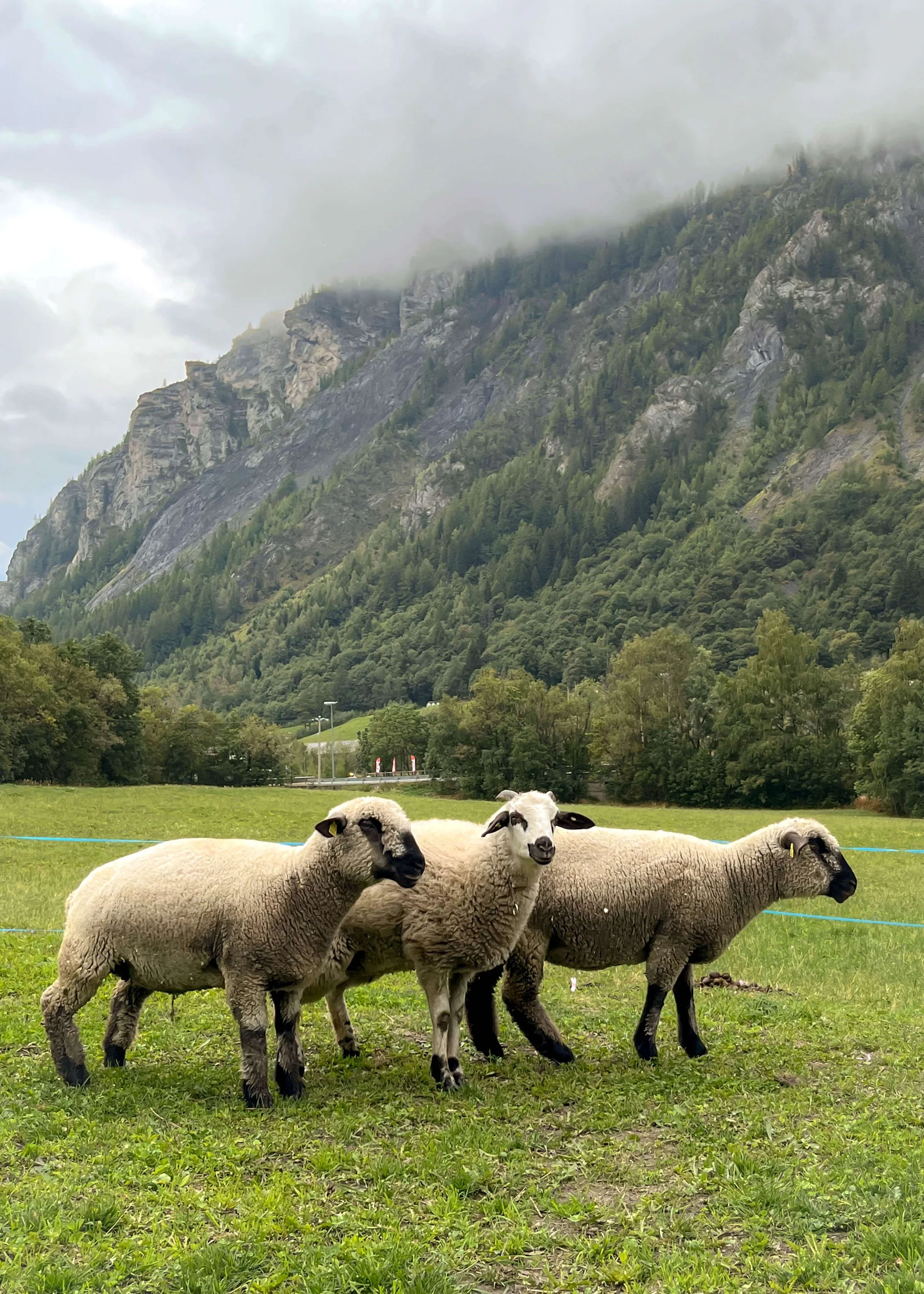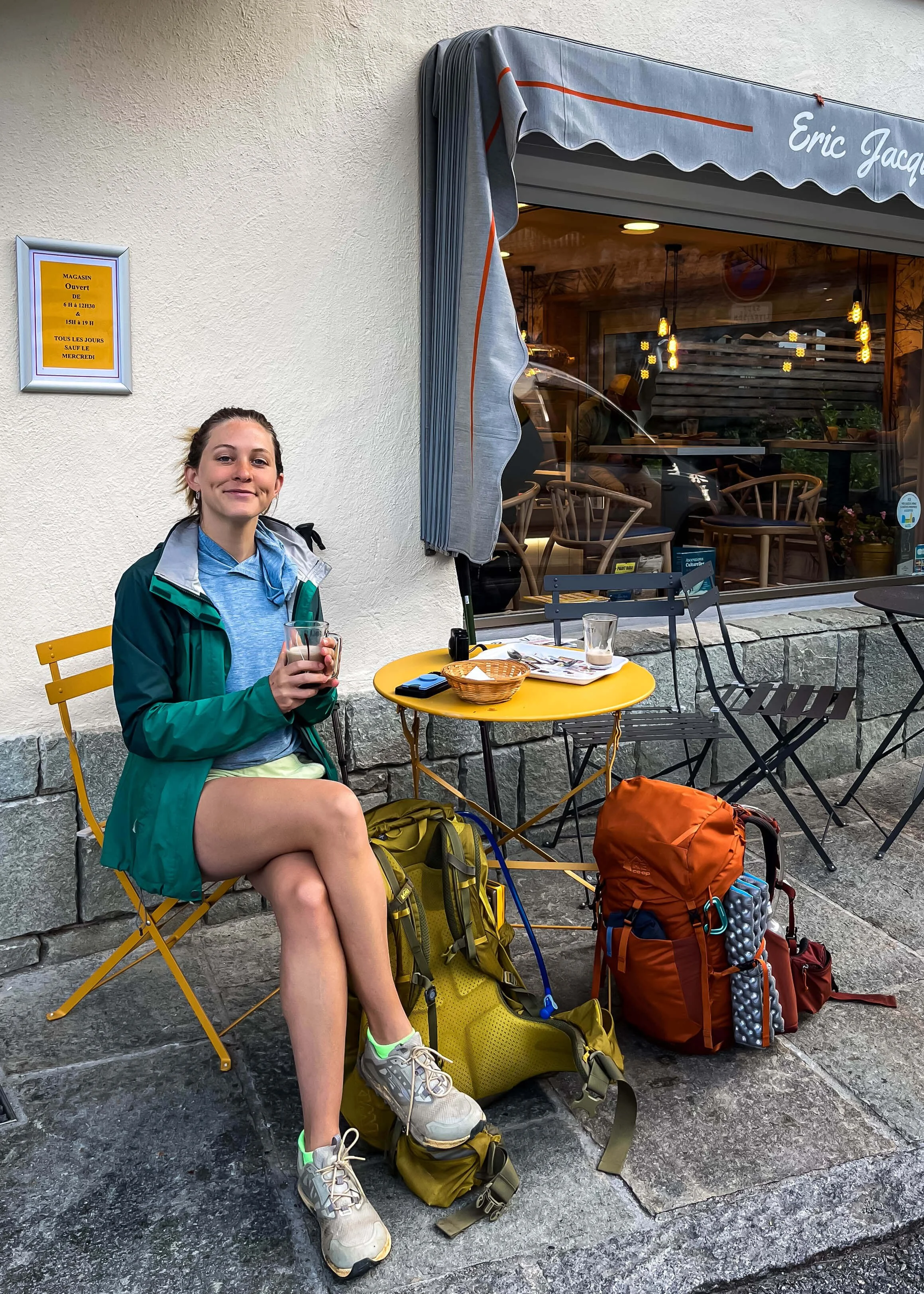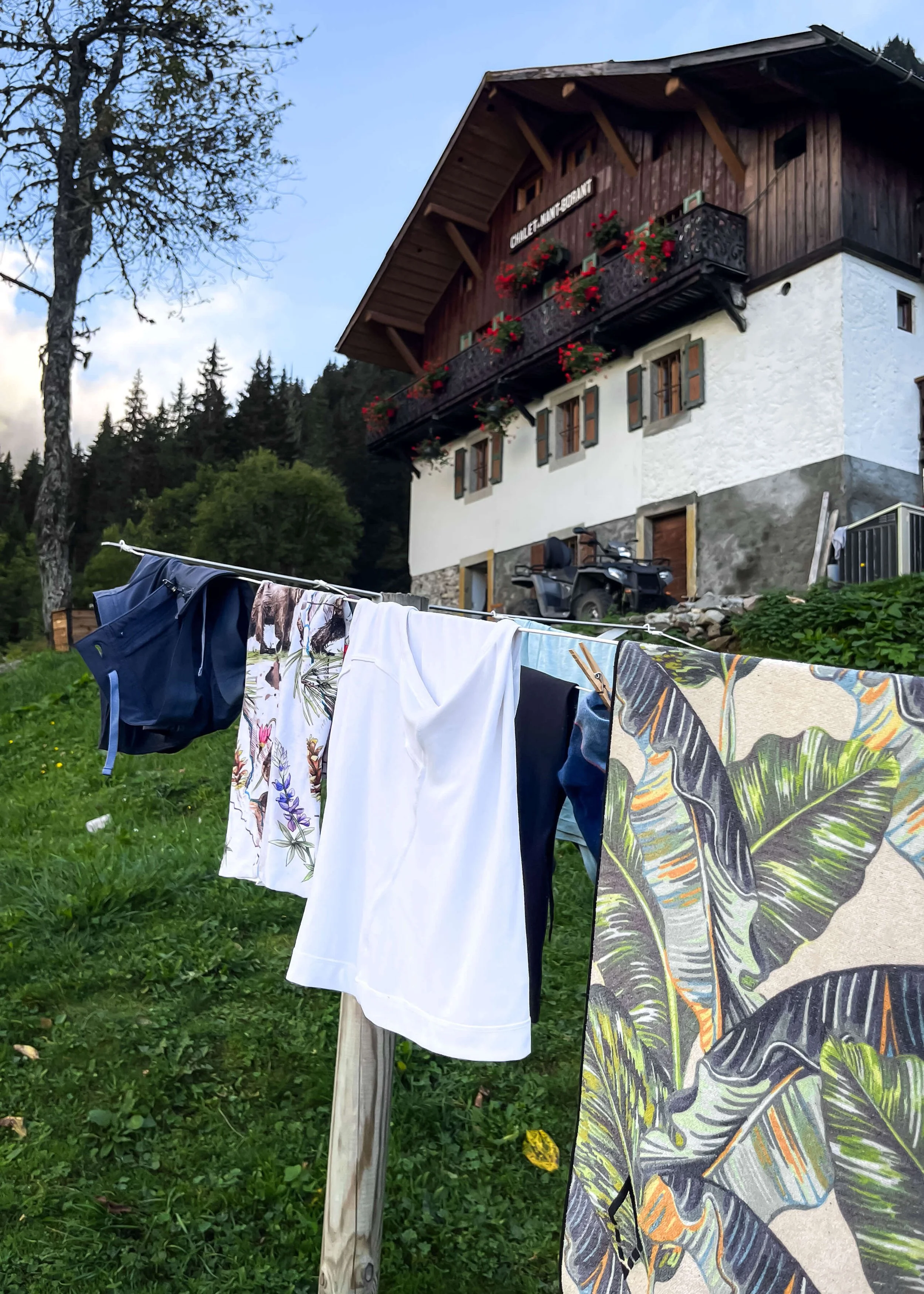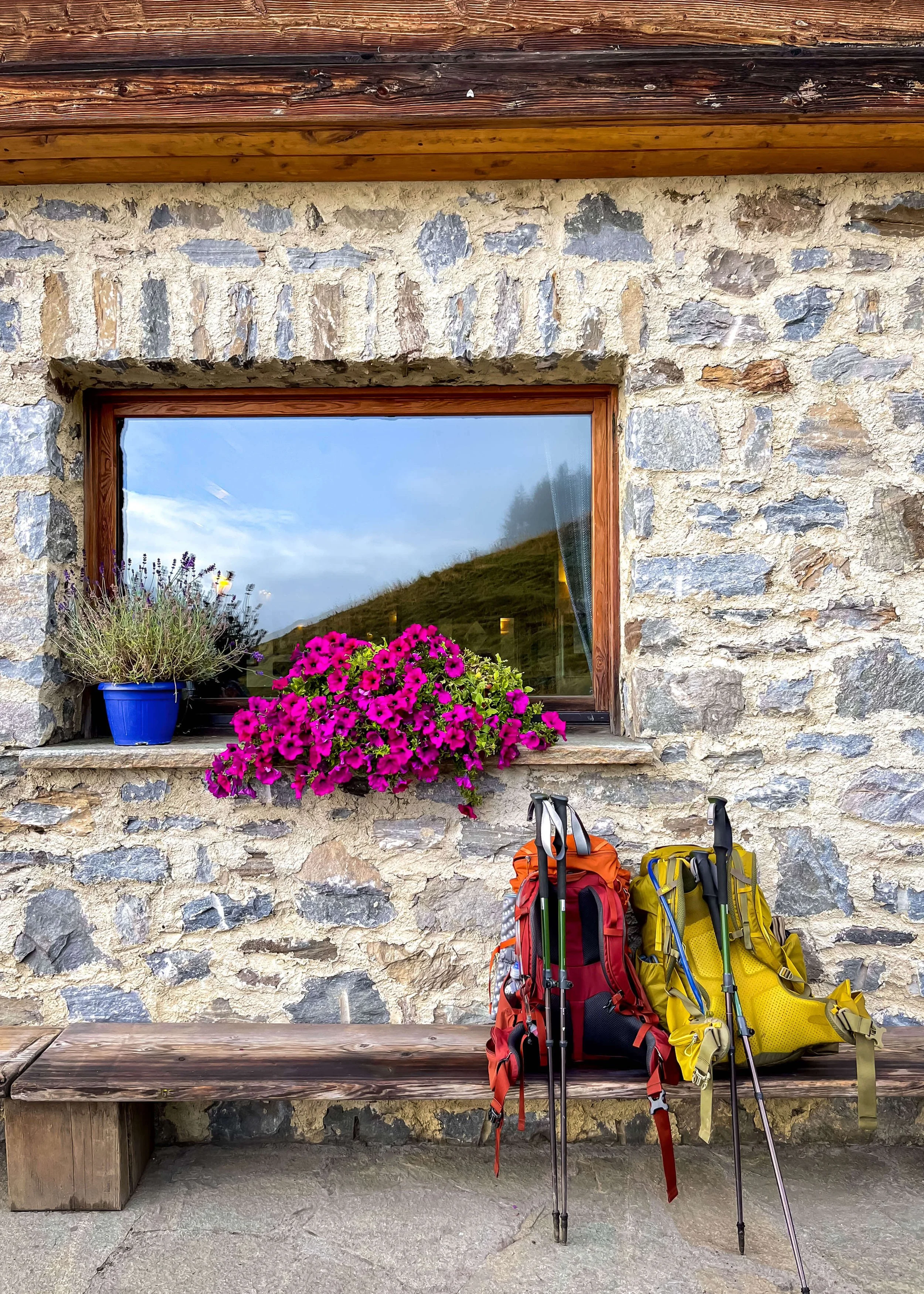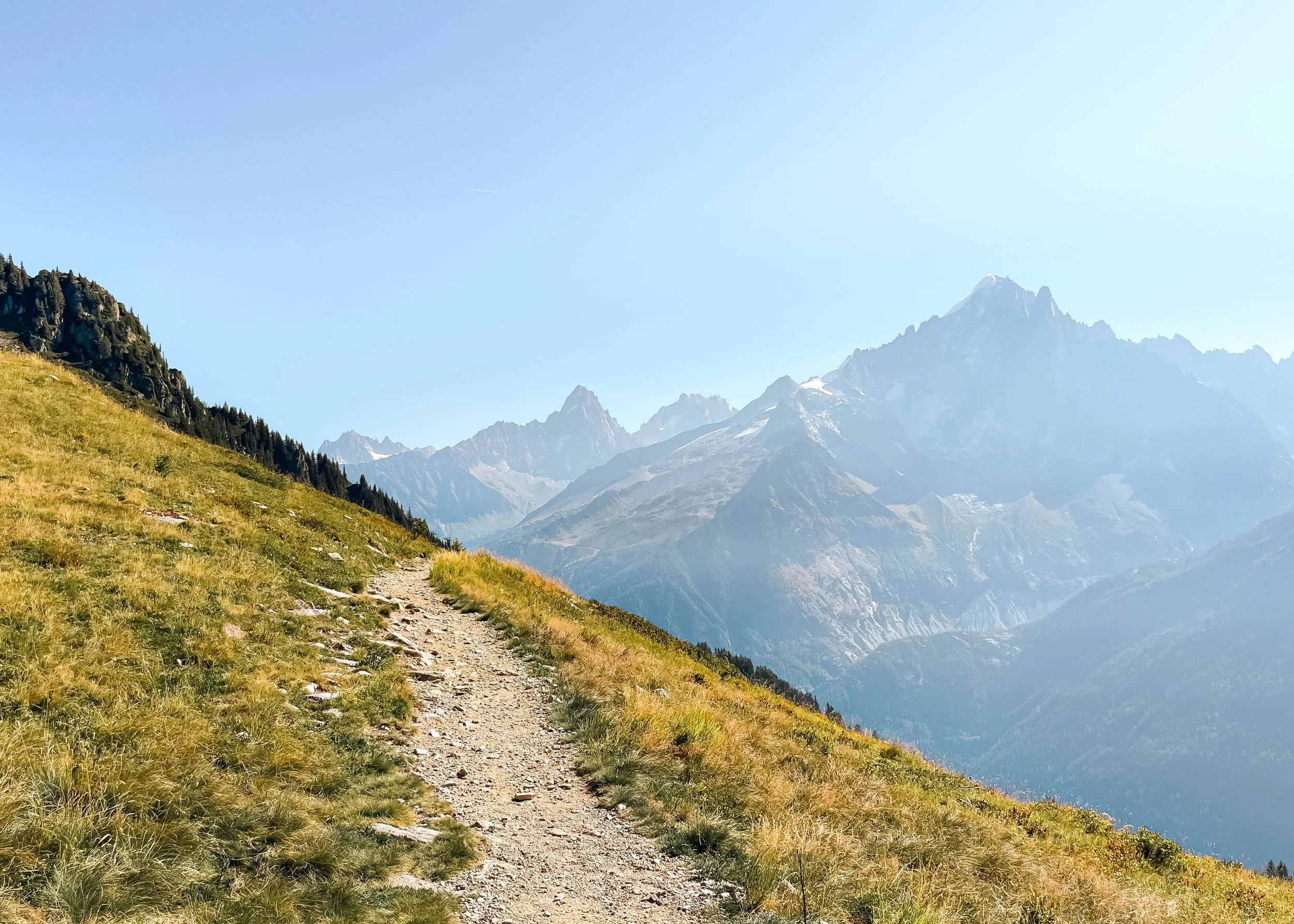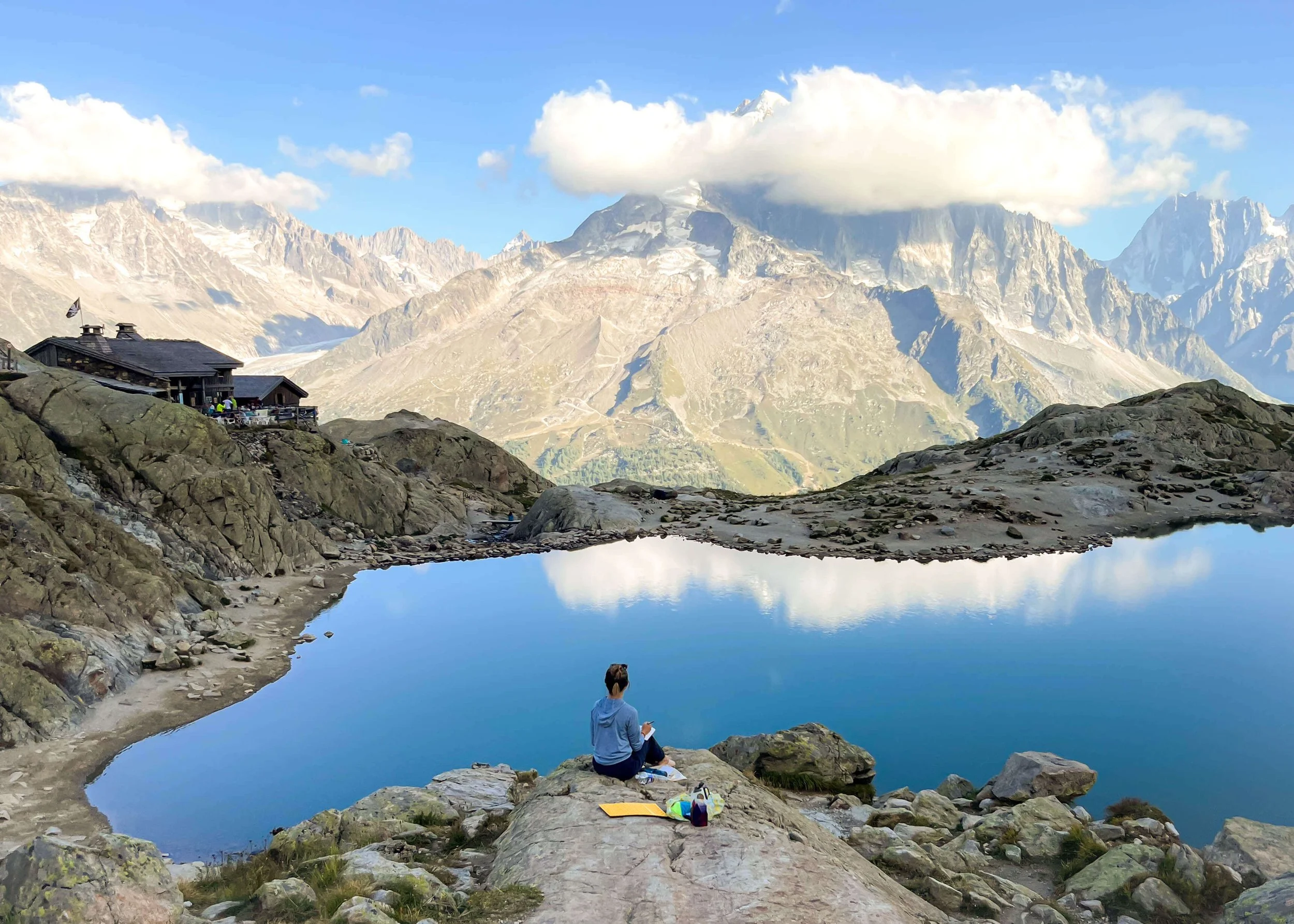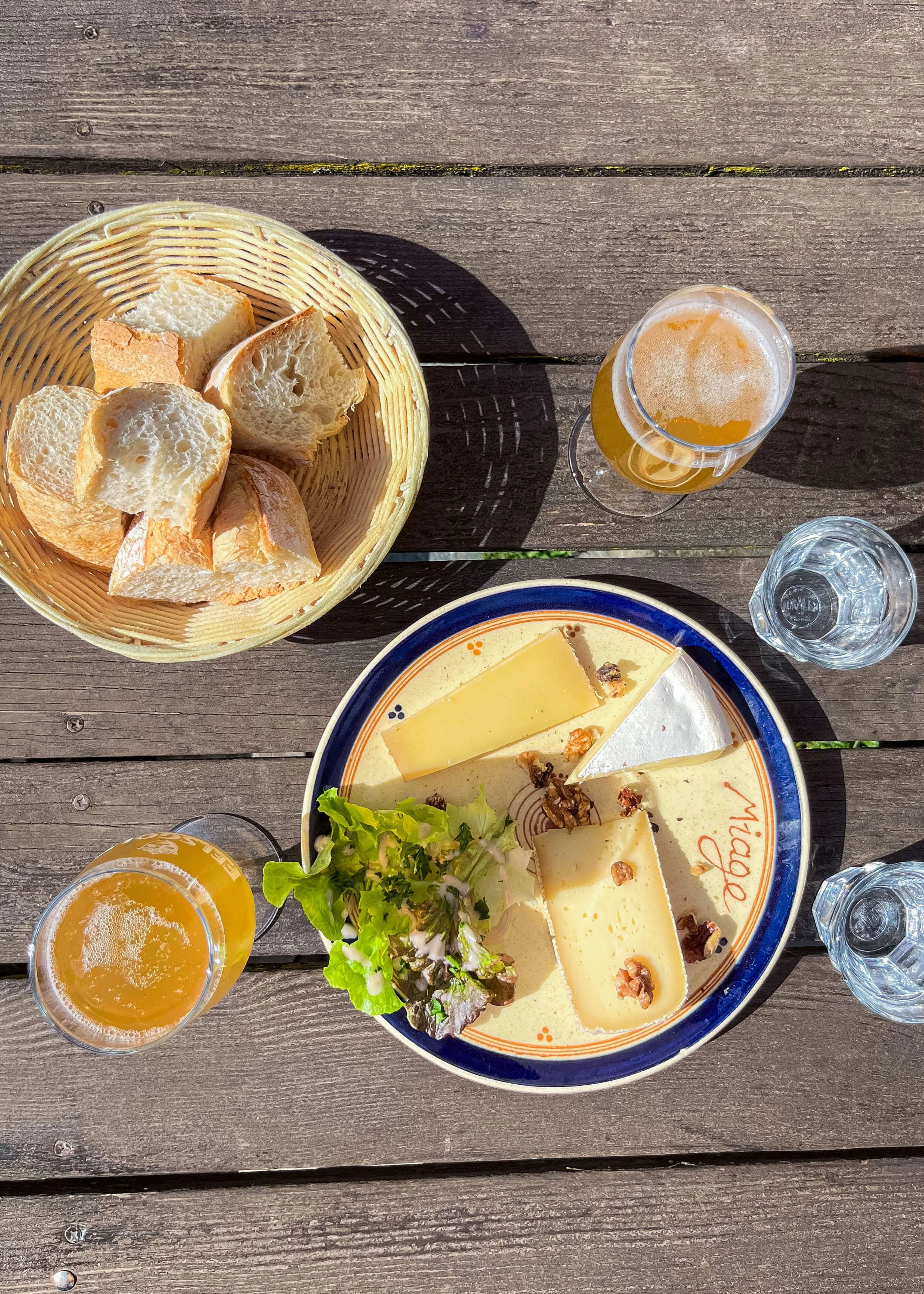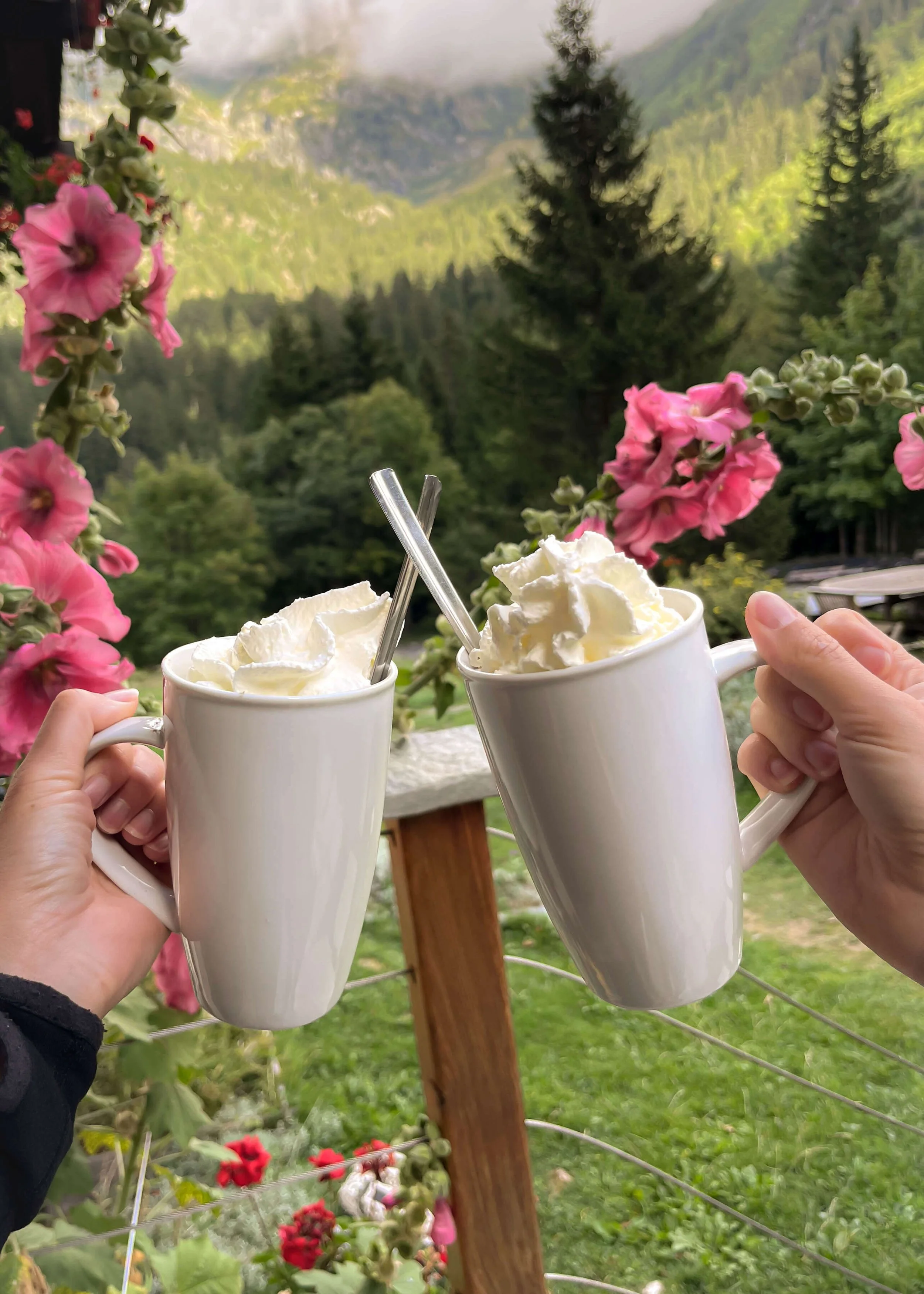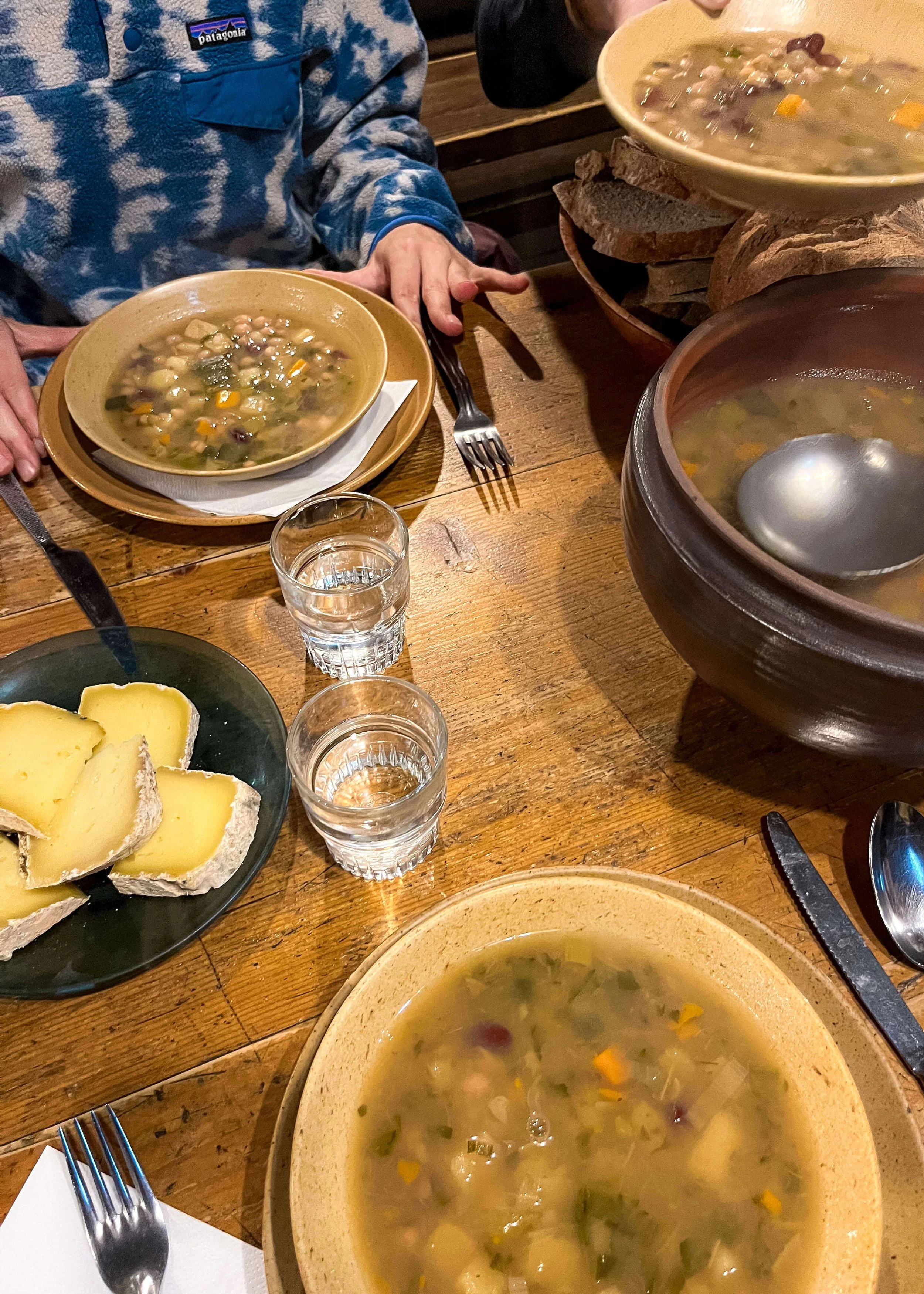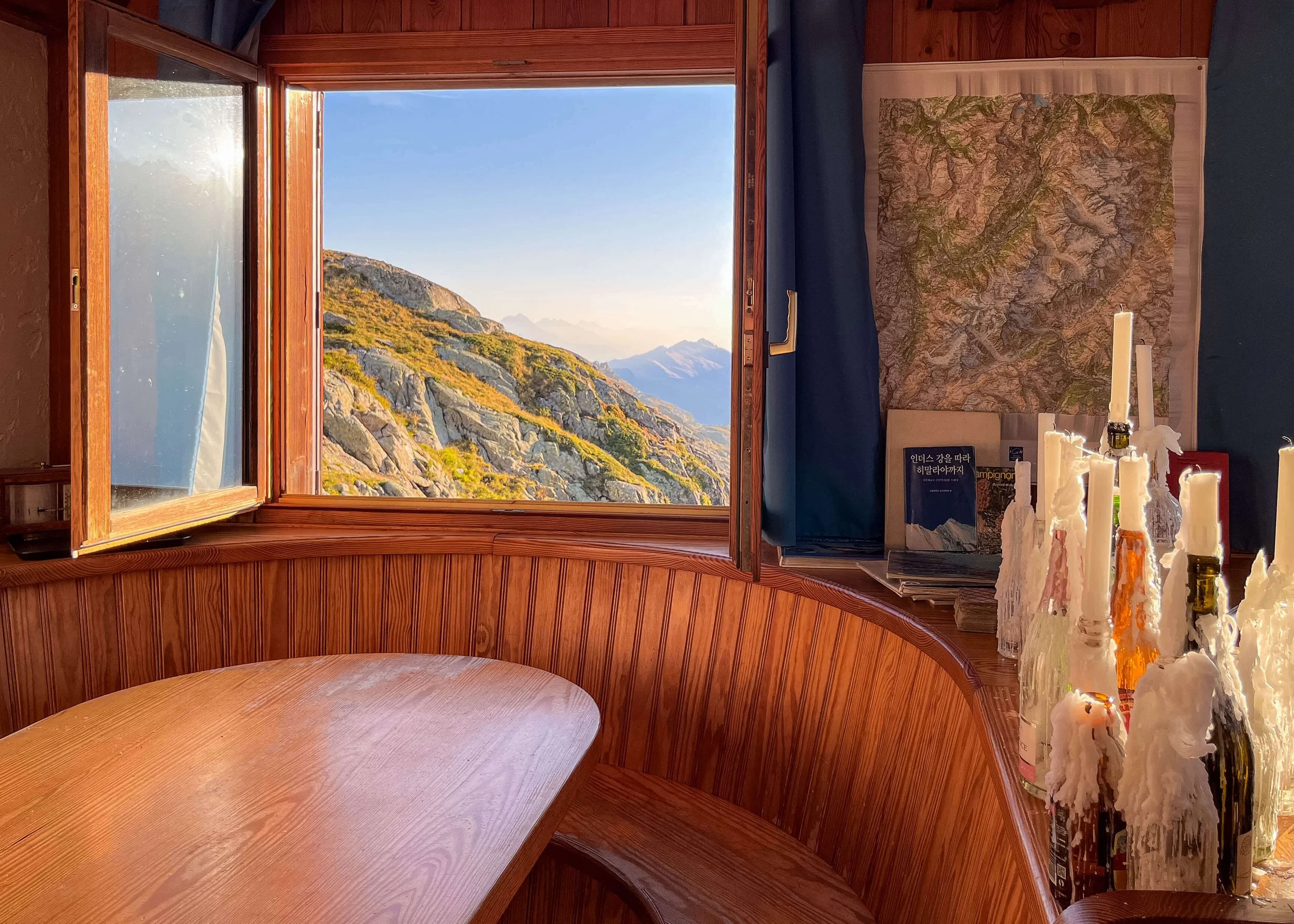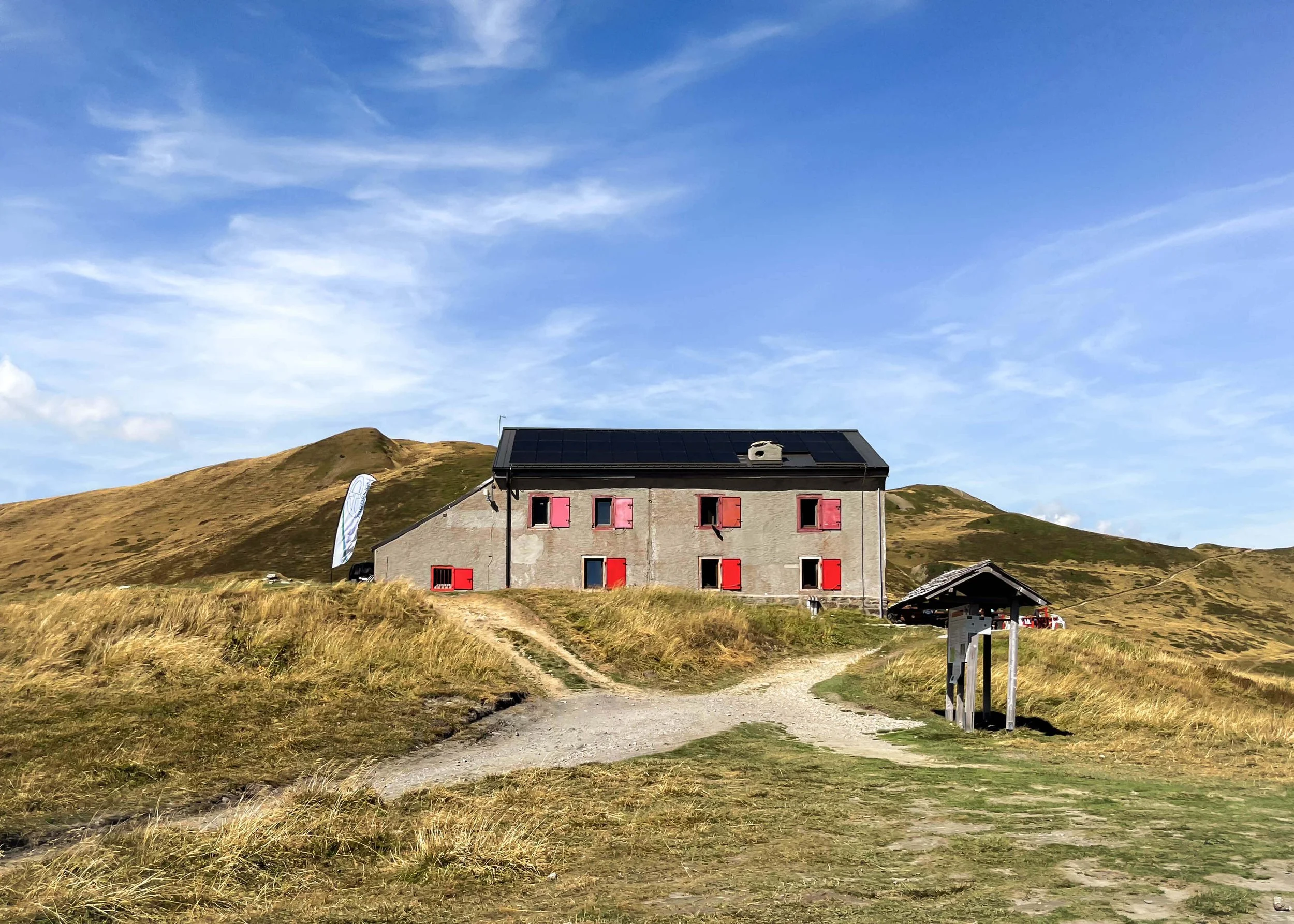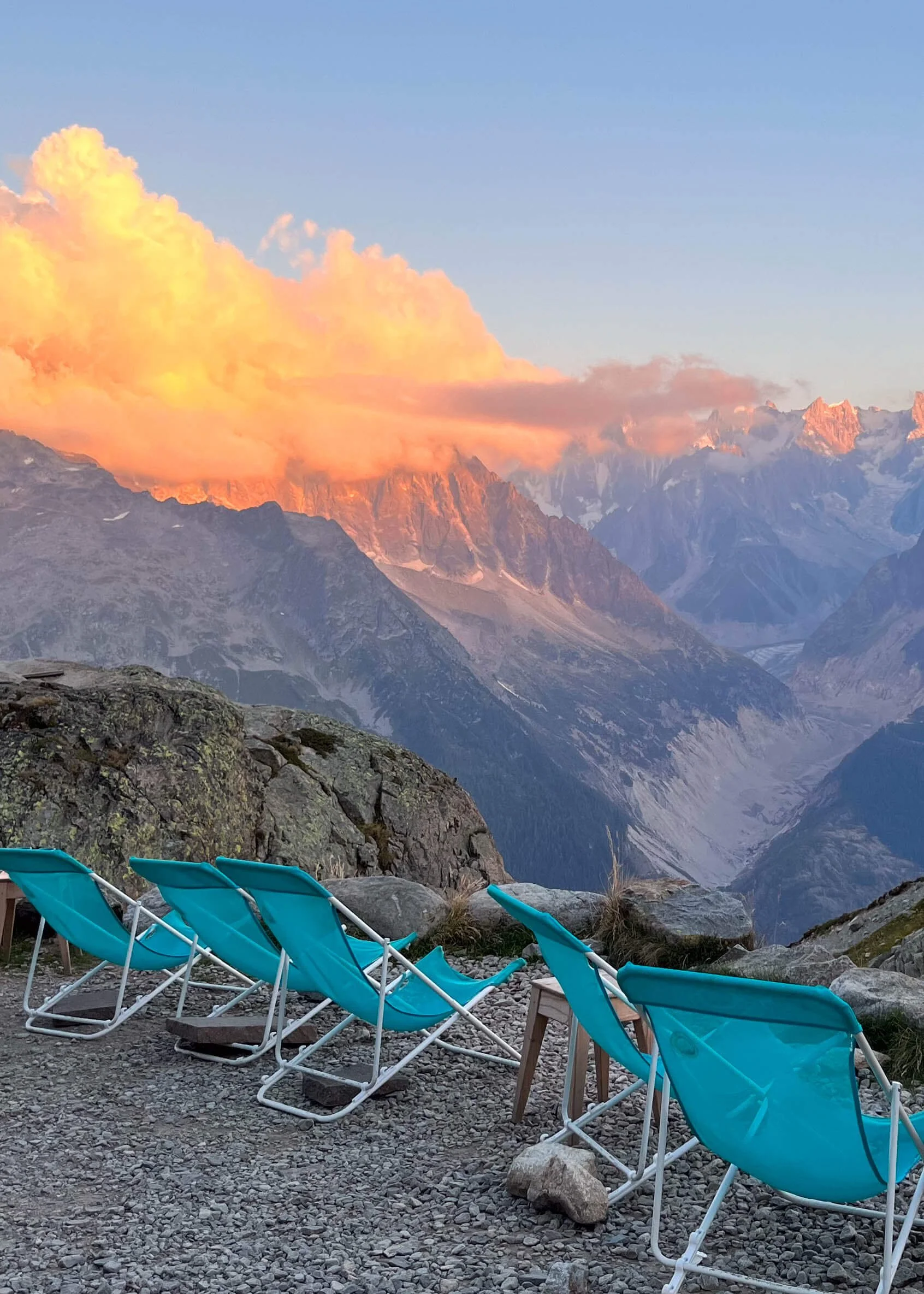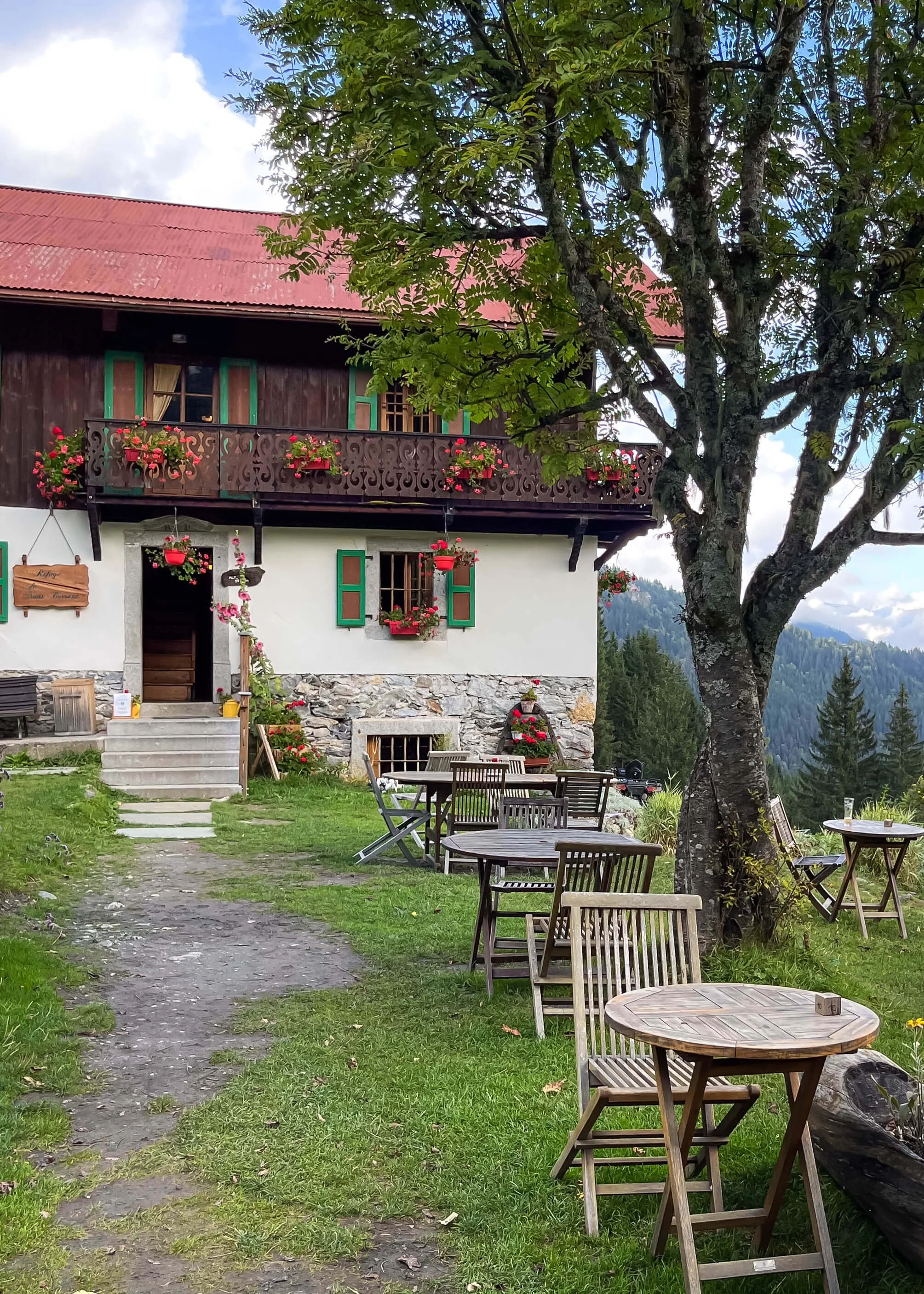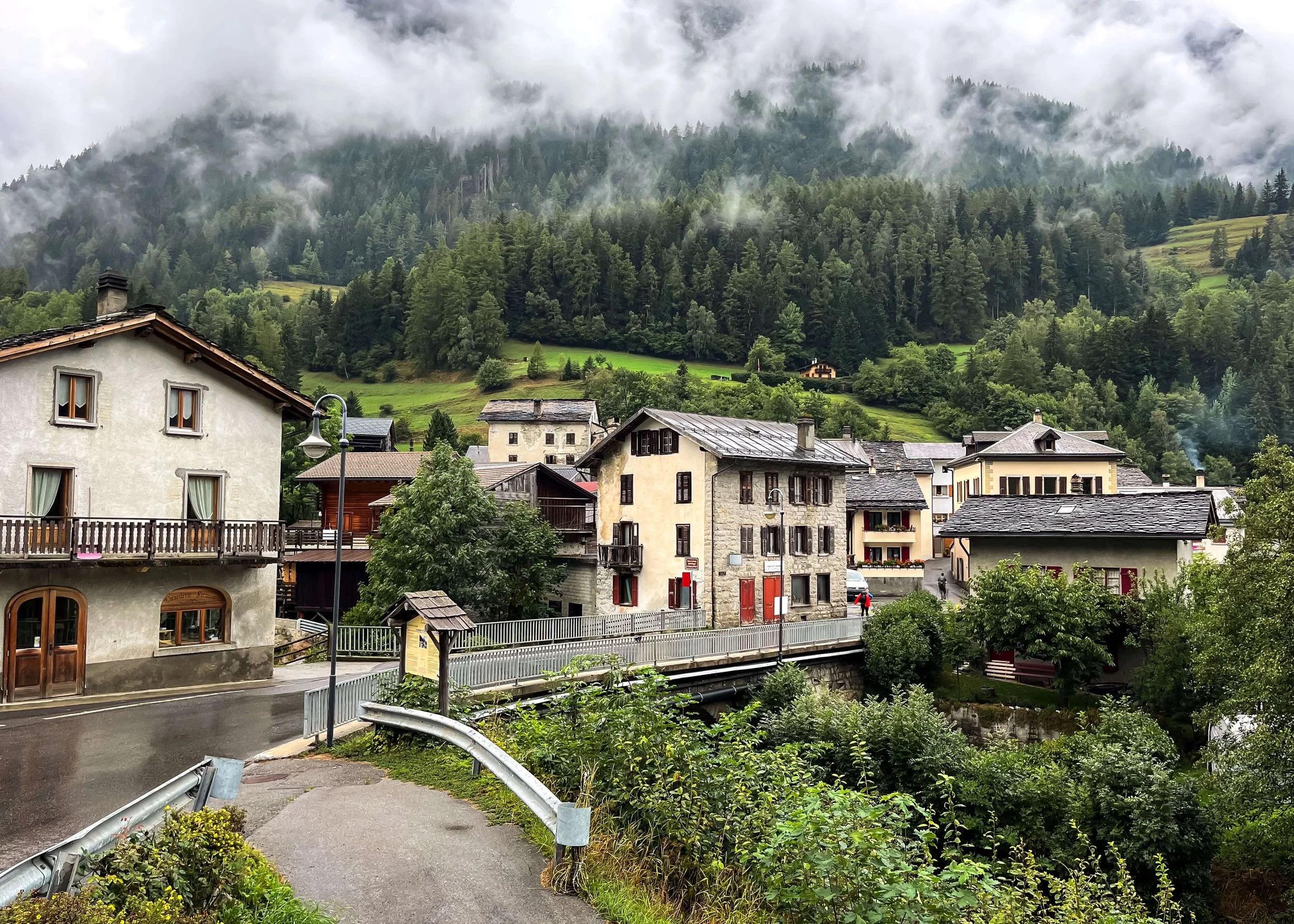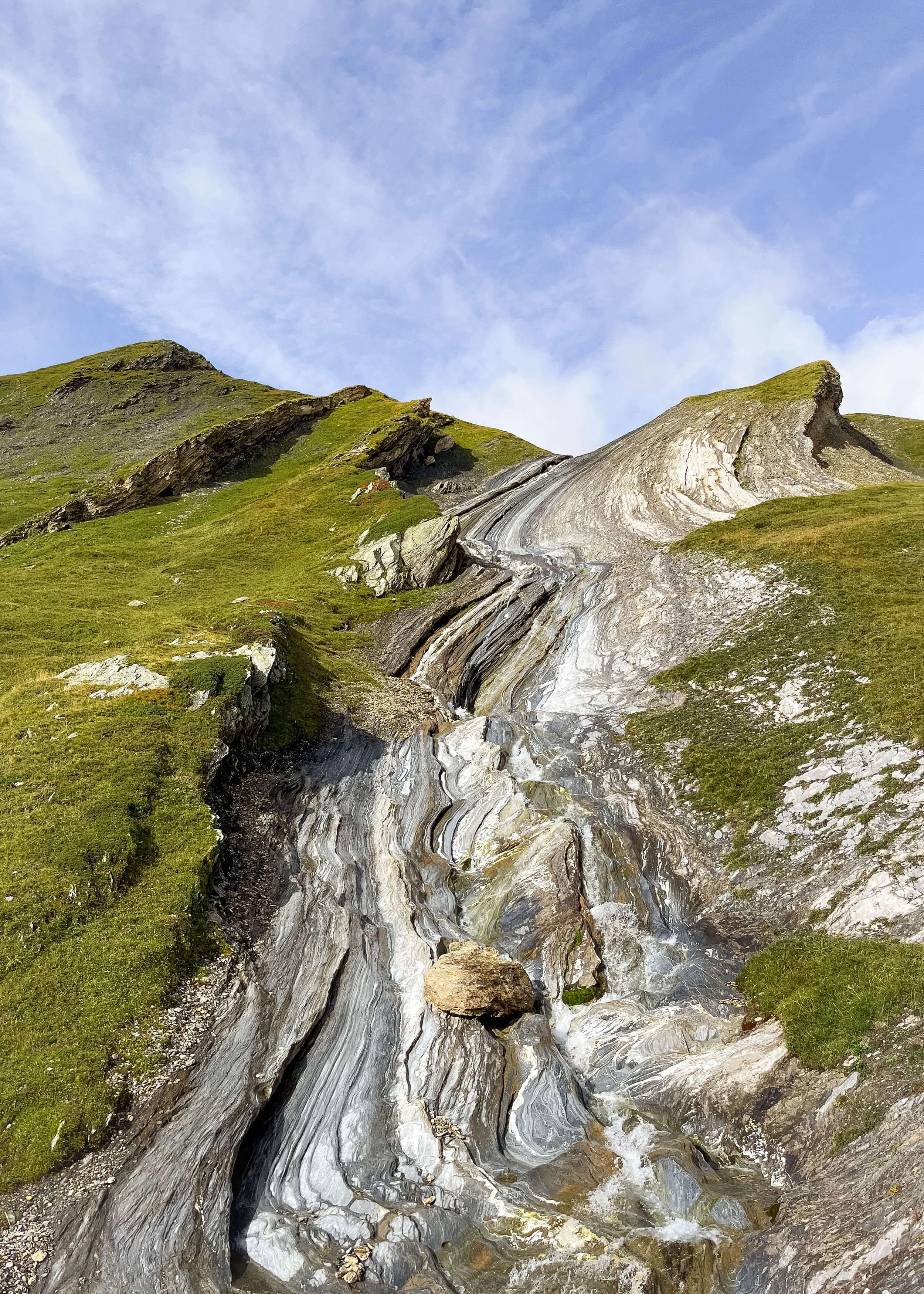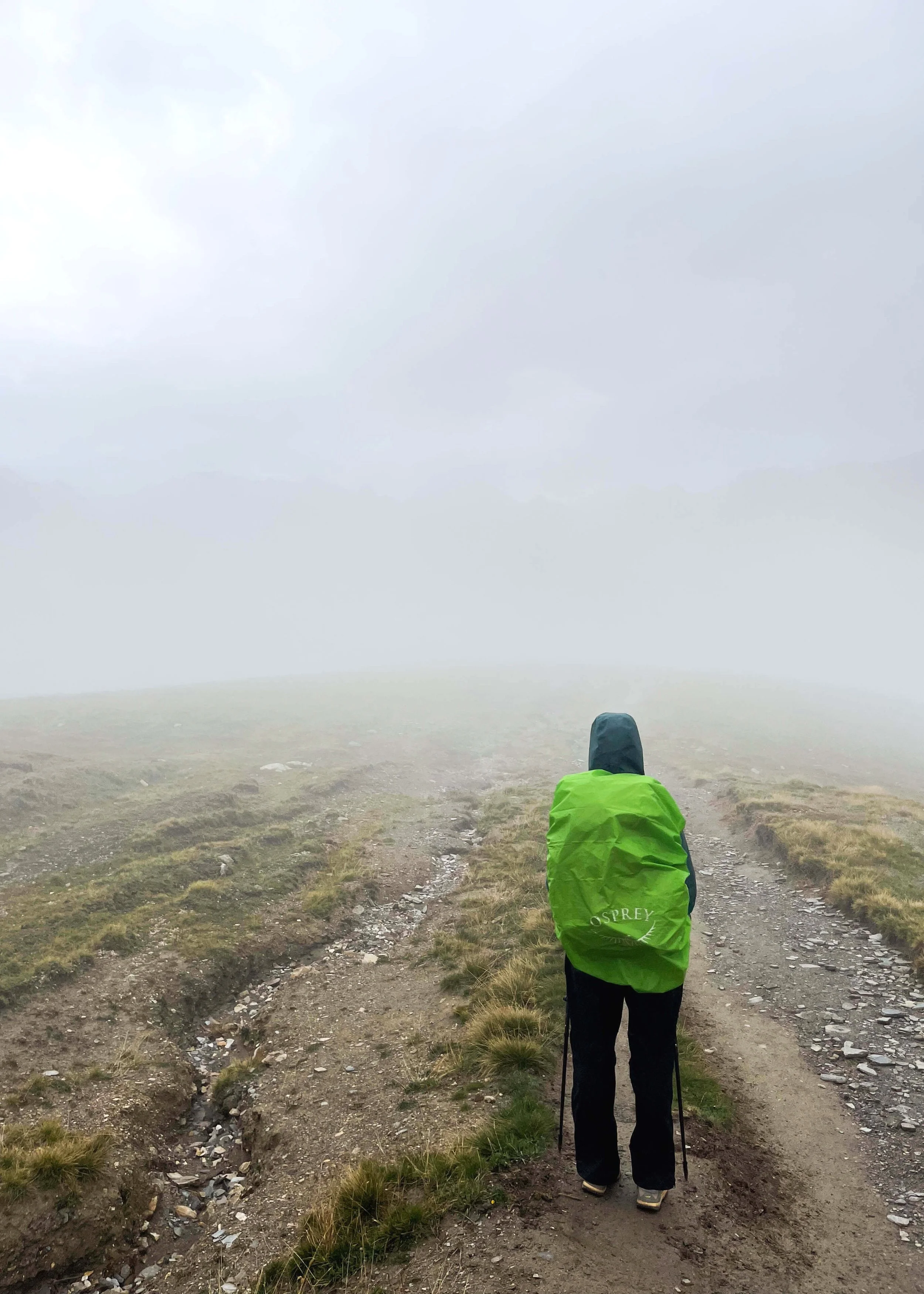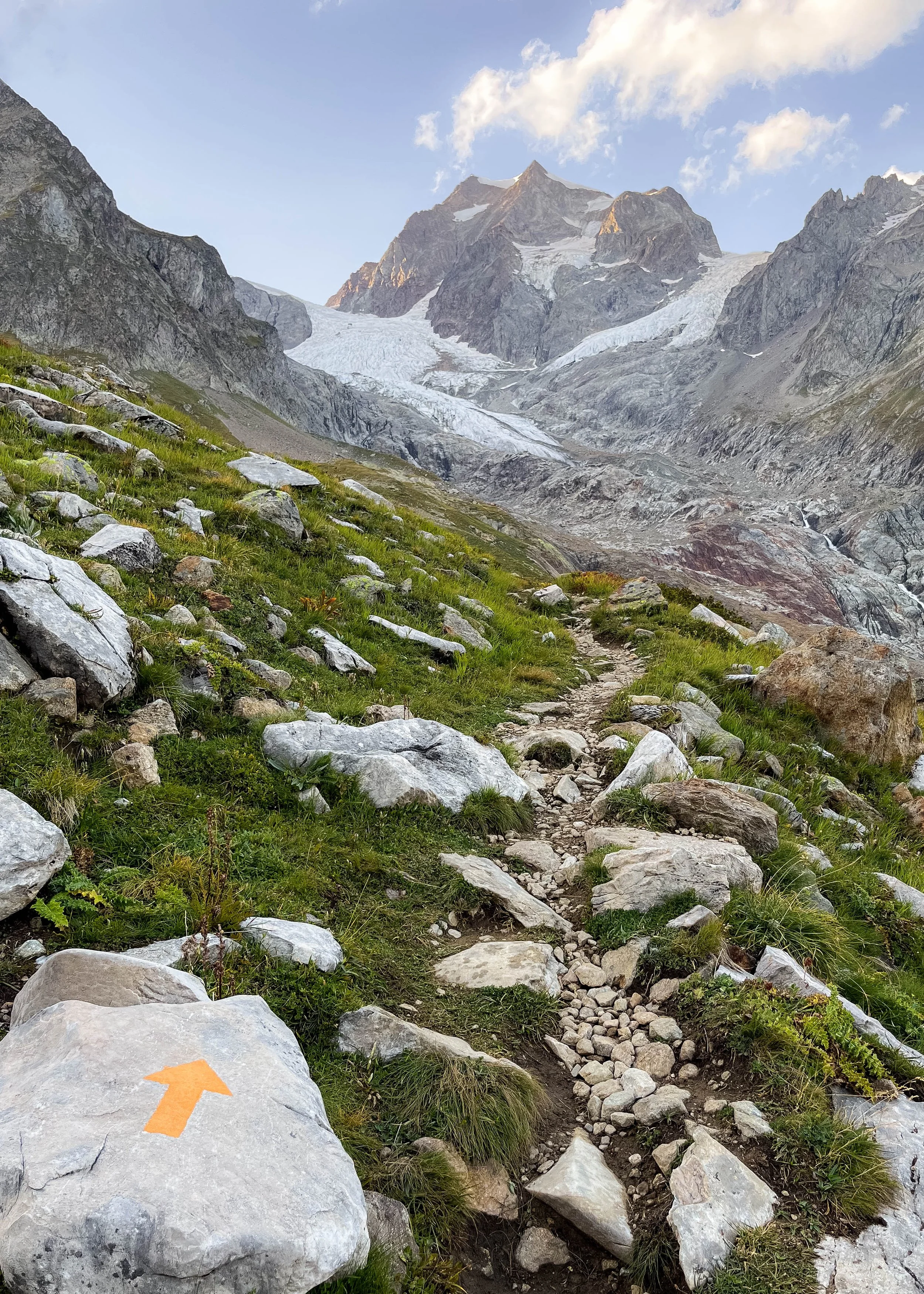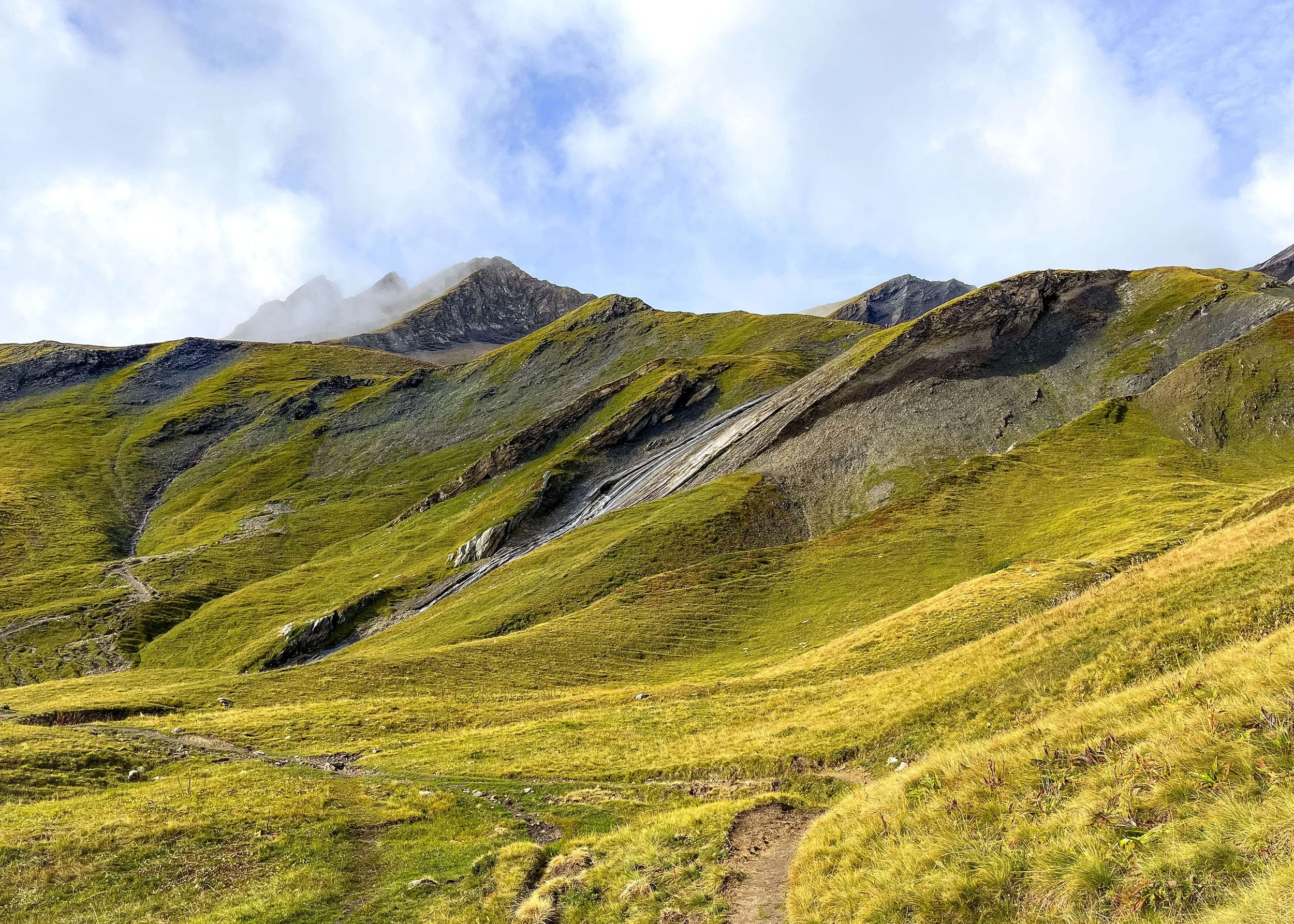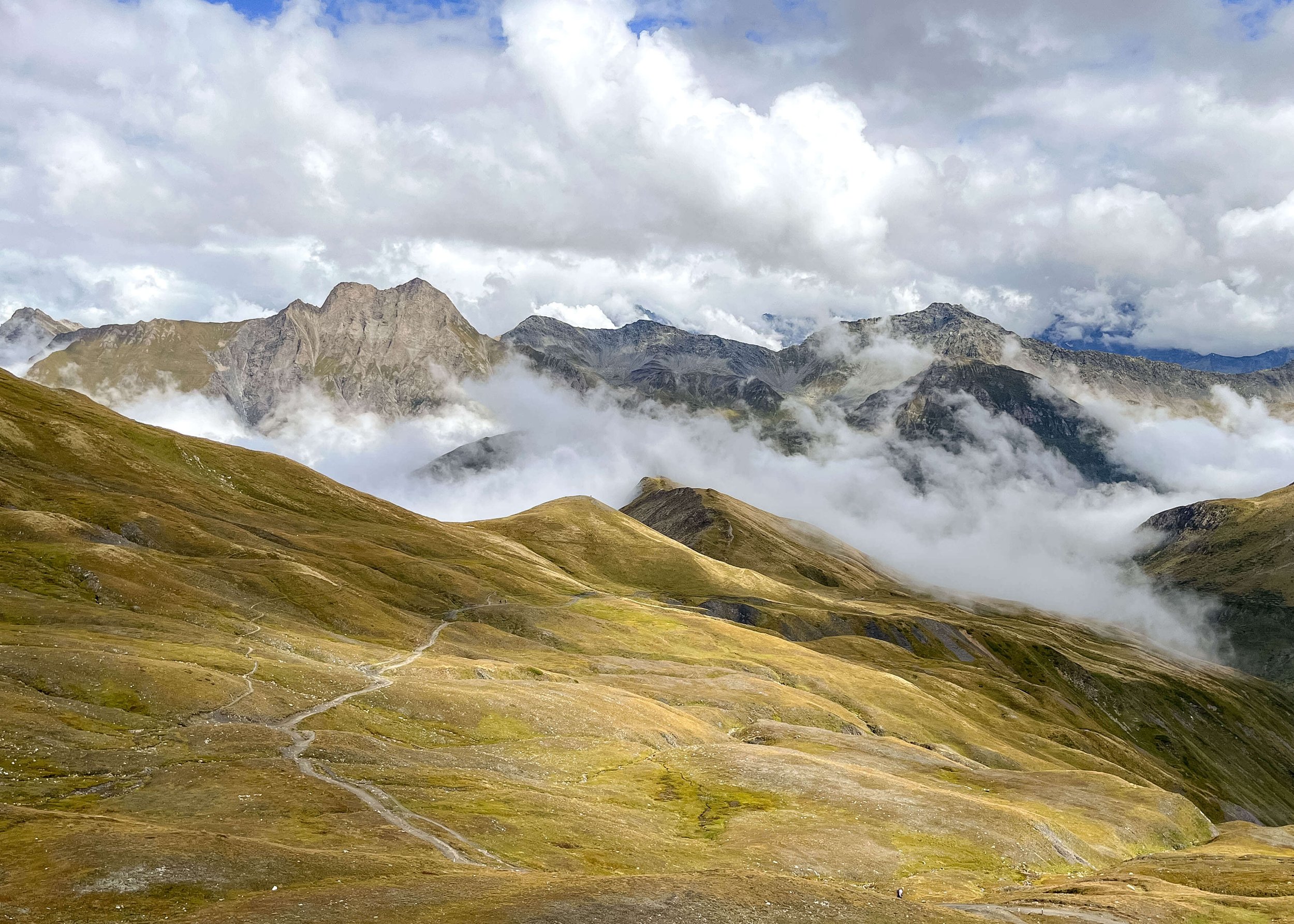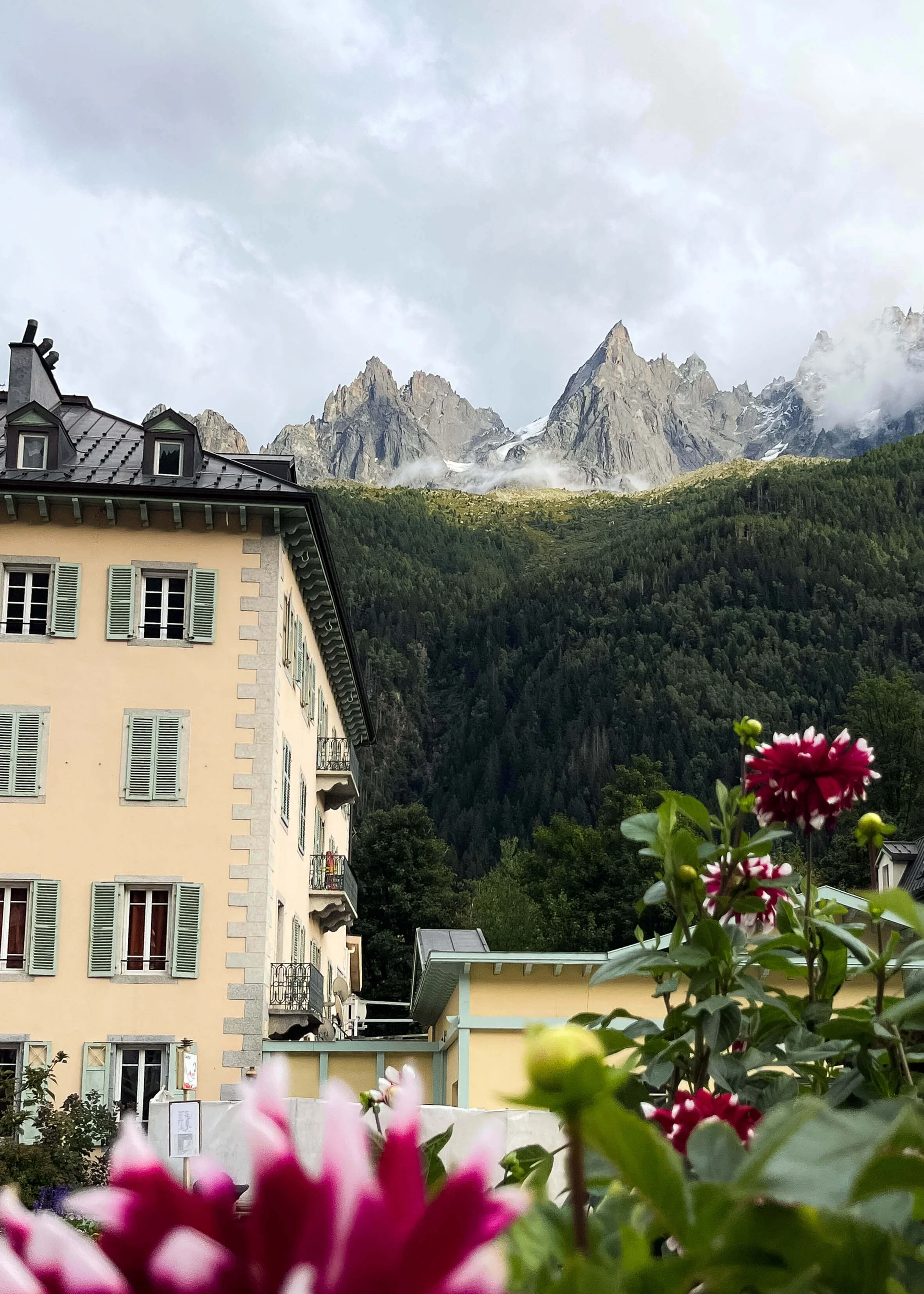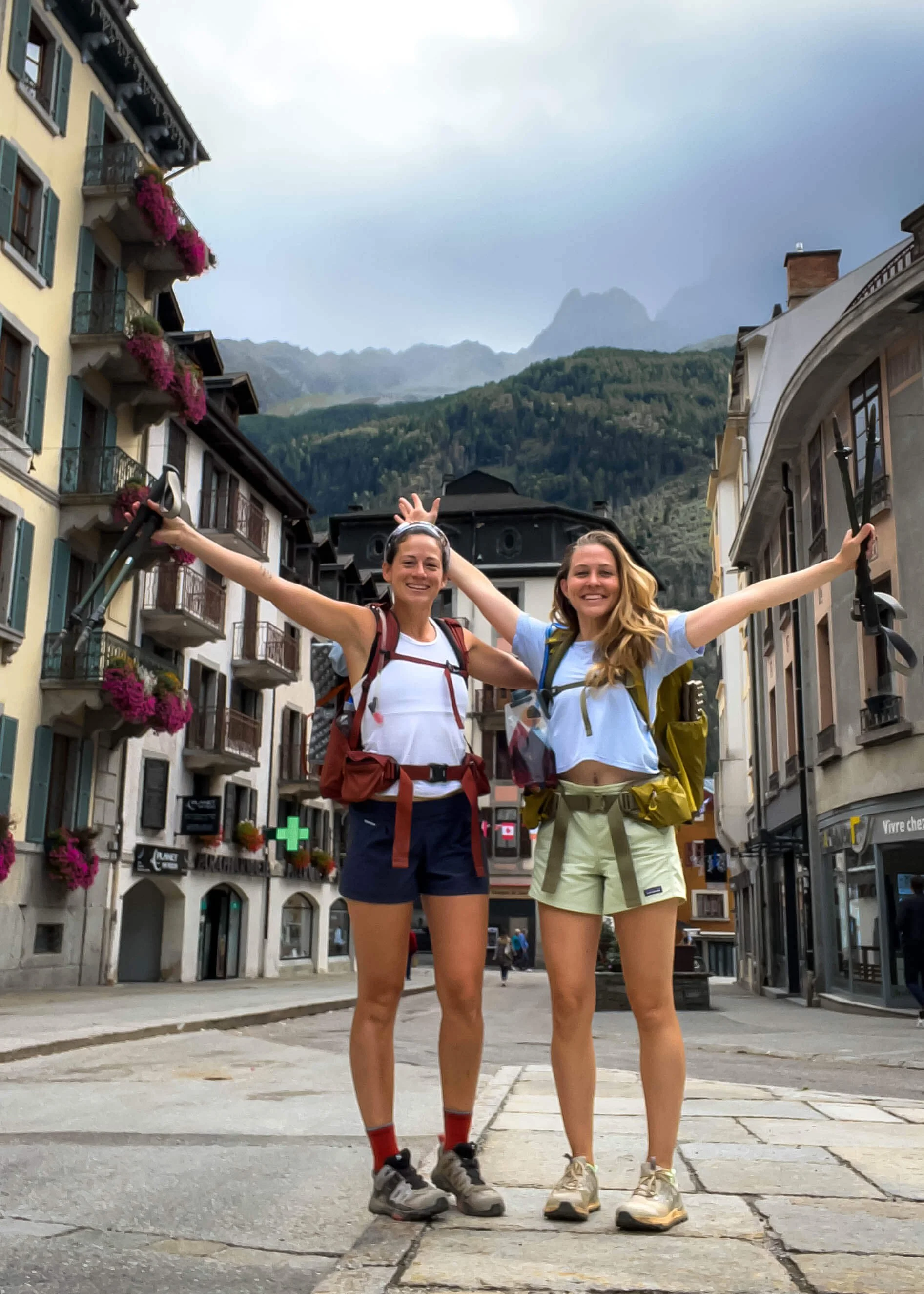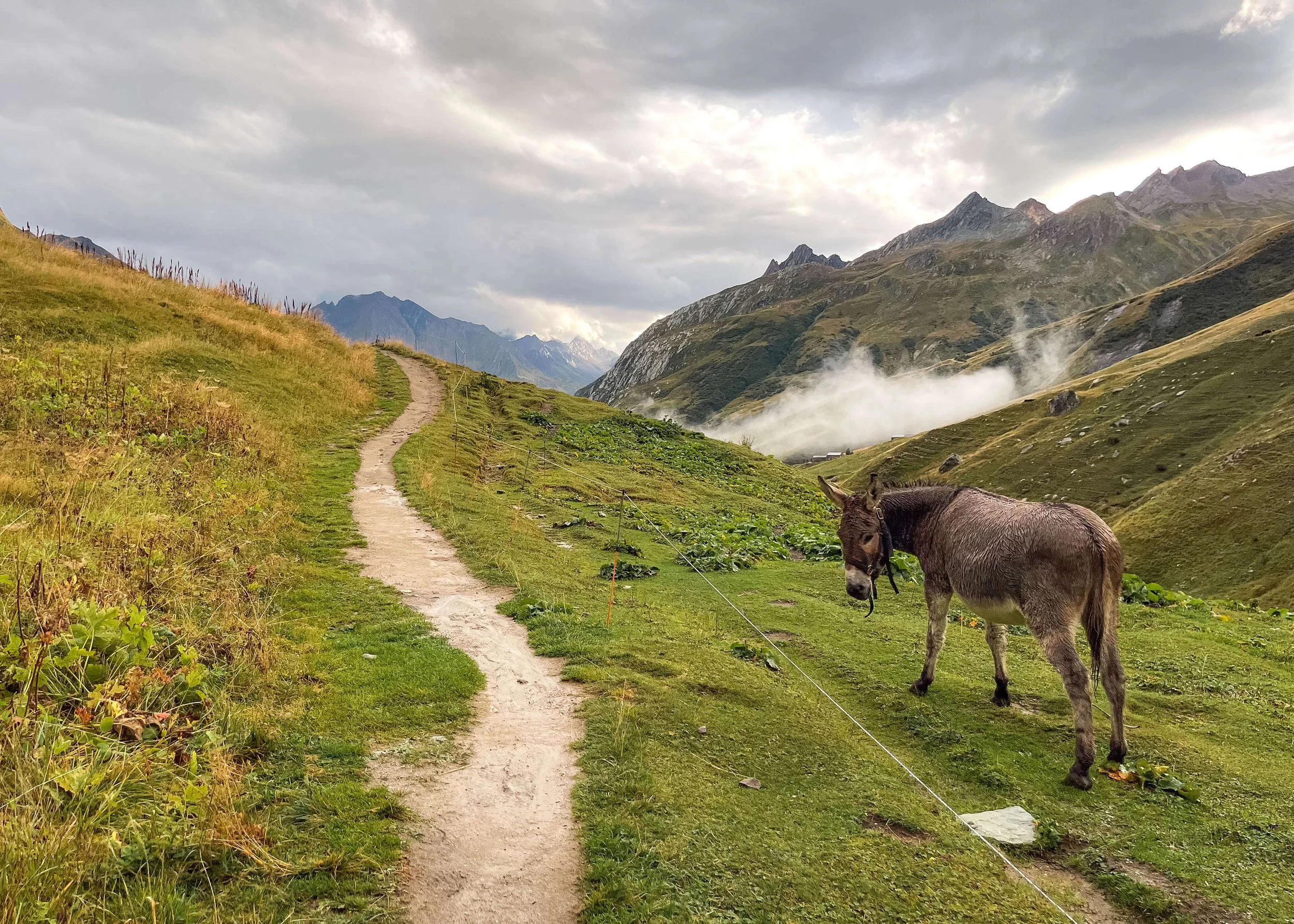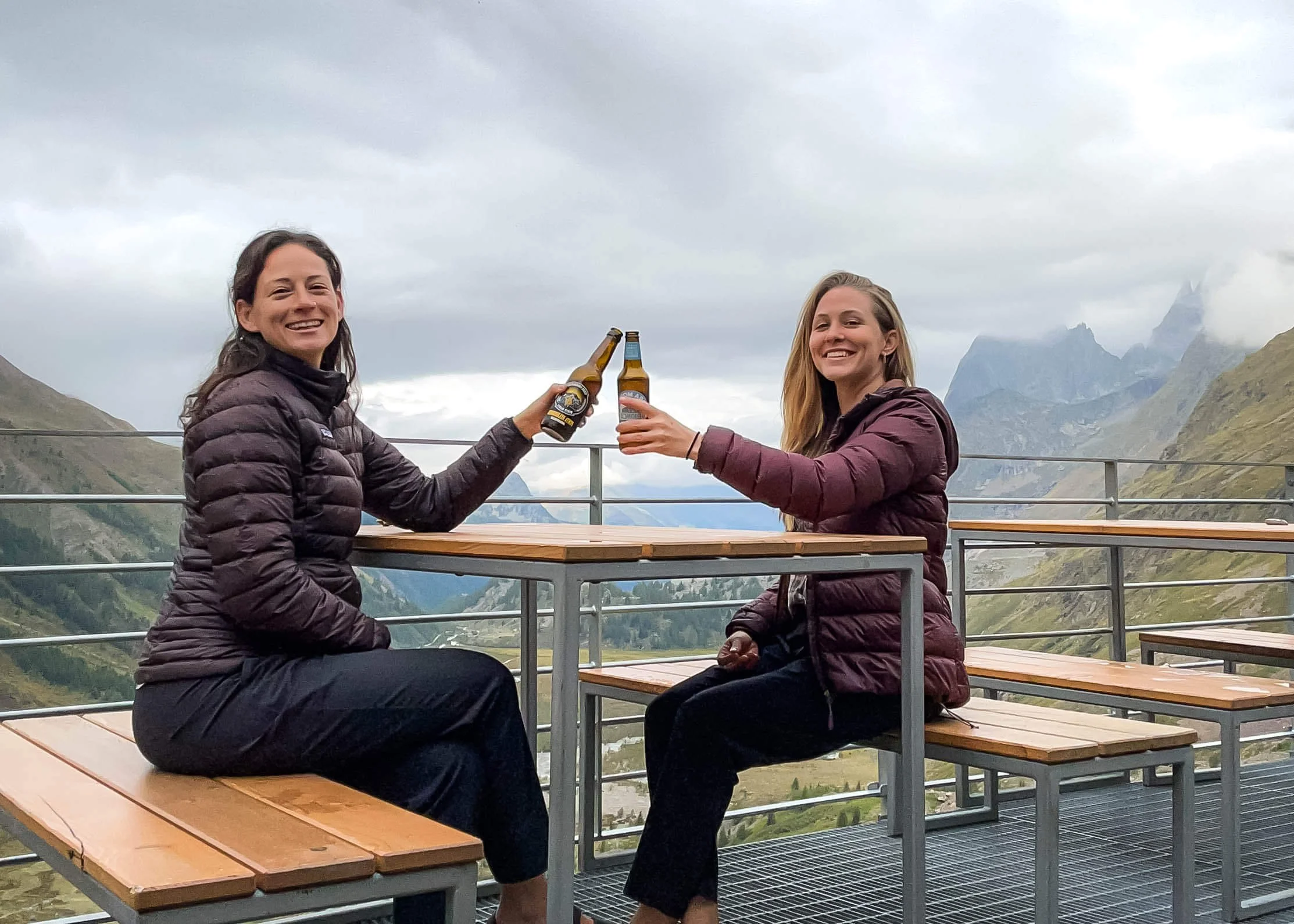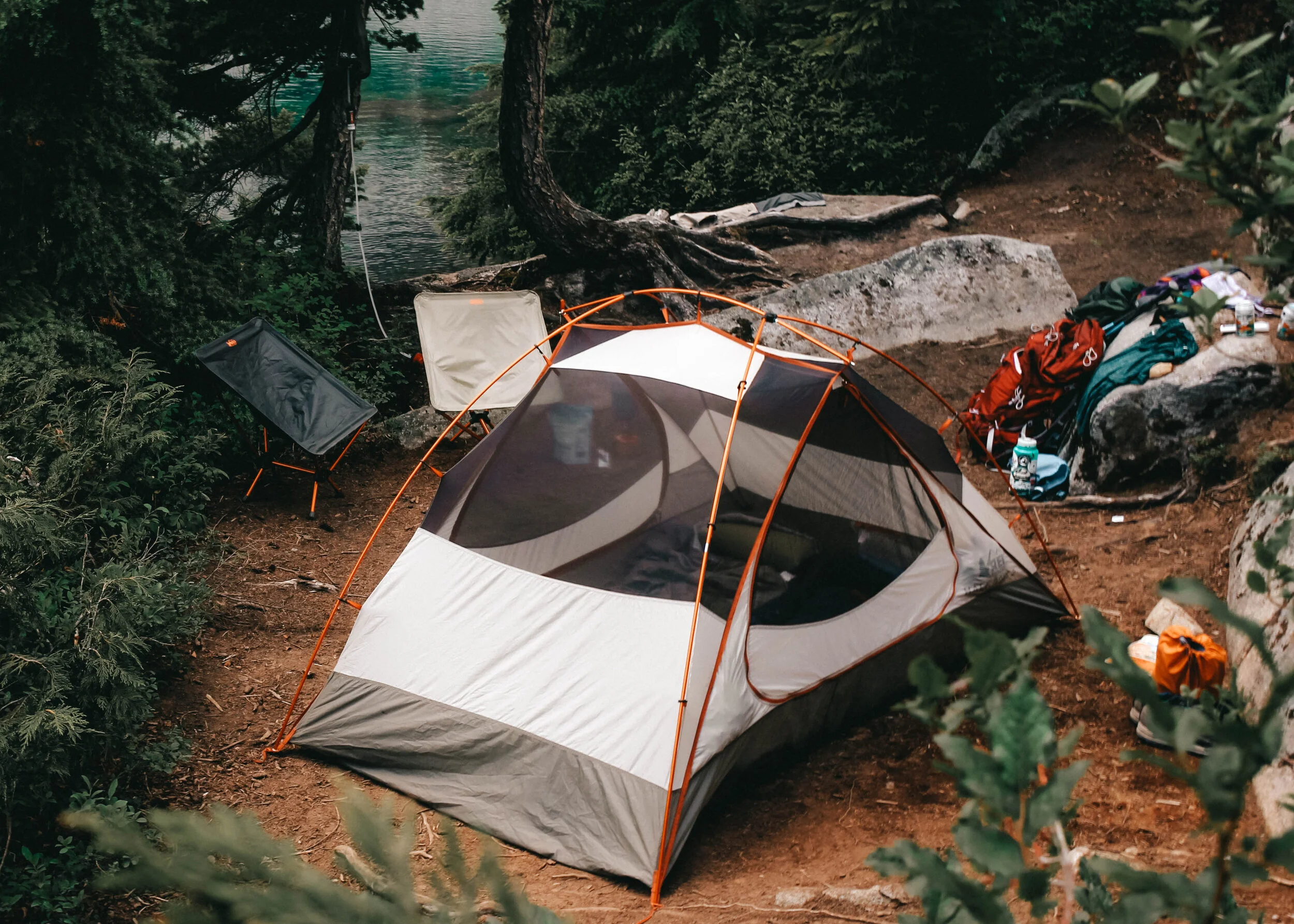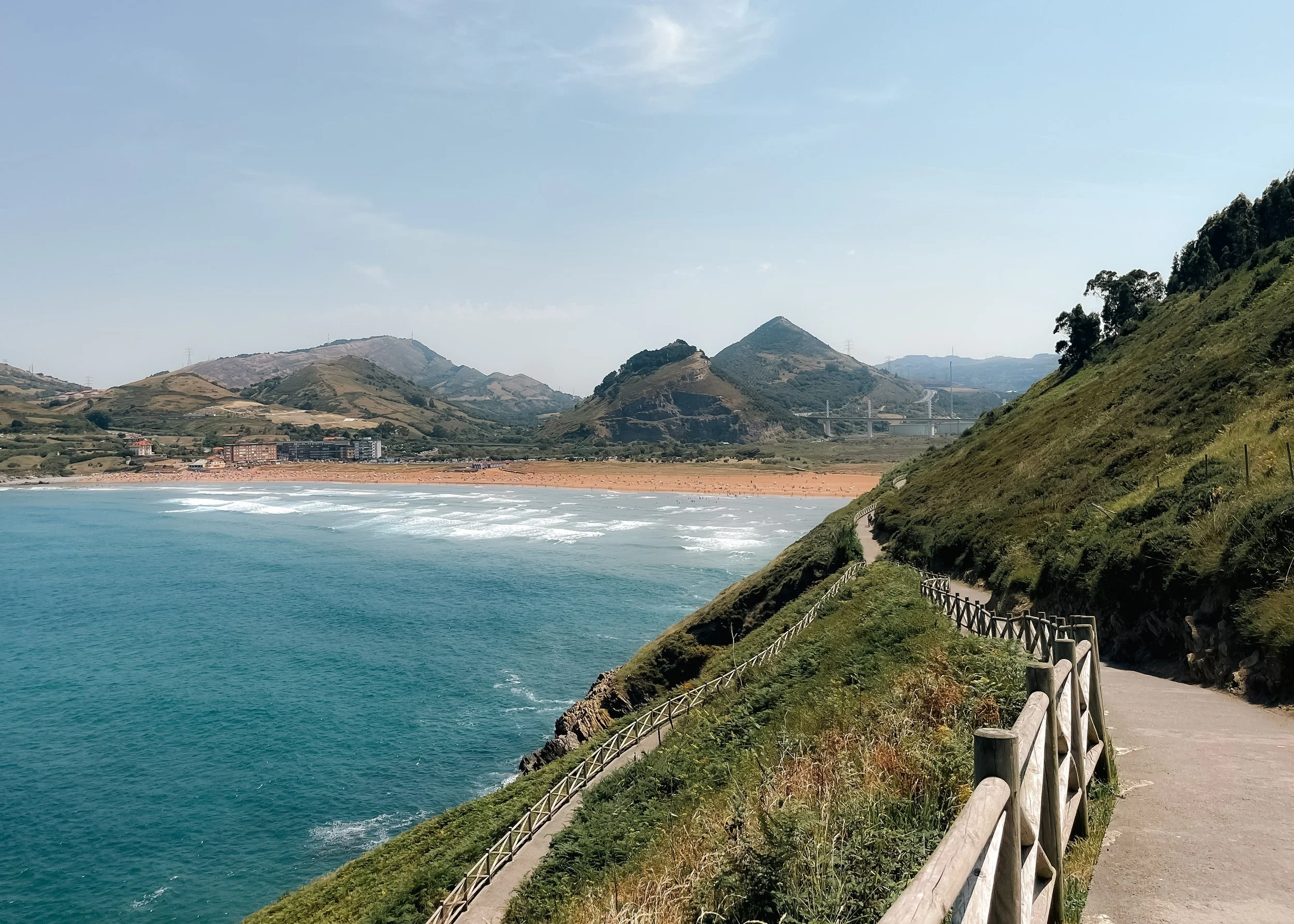Tour du Mont Blanc: Advice for Planning and Hiking the TMB
THE TOUR DU MONT BLANC (TMB) IS A STUNNING LONG-DISTANCE HIKE THAT TRAVERSES THE PEAKS AND VALLEYS OF FRANCE, SWITZERLAND, AND ITALY. IN SEPTEMBER 2023, I COMPLETED THE TMB AND THIS IS MY ADVICE FOR THOSE INTERESTED IN TACKLING IT THEMSELVES.
From start to finish, hiking the Tour du Mont Blanc (TMB) was a phenomenal experience. For 12 days, we hiked 117 glorious miles (188 km) through some of Europe’s most stunning alpine scenery, enjoying delicious food, crisp beer, and warm cappuccinos along the way. Our circumnavigation of Mont Blanc took us through cow-filled pastures and across remote mountain peaks, and into lush valleys and through charming villages. It was sunny, it was foggy, it was rainy, it was foggy again, but despite the changing weather one constant was how it managed to somehow remain beautiful. All in all, the TMB was a physically challenging and highly rewarding experience that was incredibly fun and enjoyable.
After completing our tour, I have plenty of advice to offer future TMB hikers. In this post, I cover everything from packing and planning, to what to expect on the TMB in terms of lodging, meals, and budget. You’ll discover a treasure trove of helpful tips, such as what direction to hike and which variants to check out, so that you can make the most of your trip.
PACKING
The trickiest part of the Tour du Mont Blanc, besides actually hiking it, of course, is packing for it. You’ll find yourself straddling a thin line between keeping your bag as light as possible and making sure you have everything you need.
Weather on the TMB changes fast—like, bright sun to white-out fog in 15 minutes fast—so my biggest piece of advice is to pack layers. Of all my clothes, my convertible pants/shorts were my most functional and beloved item. It’s safe to say that I wore them for 80% of my TMB, zipping the pant legs on and off with gusto all day long. A raincoat and backpack rain cover are also non-negotiable. My long-sleeve sun shirt was a staple item that I highly recommend, too.
Aside from clothes, a sleep liner, towel, and hiking poles are essential items to pack. Most other things are based on personal preference. For example, I prefer a 2L water reservoir for easy sipping but other hikers may prefer a good ol’ water bottle.
After hauling my pack for 117 miles (188 km), these are my main takeaways:
Luxury items
A few “luxuries” I packed (and loved having, I might add) were a cork massage ball, a seat pad for mid-hike snacking, a small tote bag, and laundry soap.
Didn’t bring but wish I did
A kindle or book to read during downtime and my camera.
Budget
The average hiker will spend around €100 per person, per day for lodging and food. You can do it slightly cheaper if you pack food for lunch from supermarkets (which are sometimes scant to find) and opt to not have drinks (but I recommend you do). I say “slightly cheaper” because half-board accommodations (bed, dinner and breakfast) are a non-negotiable price. You can pay for what you need separately though.
Speaking for ourselves, depravation was not our agenda. We unapologetically drank all the wine, beer, coffee and hot cocoa that our little hiking hearts desired. We also had several lunches at auberges during our hike. Doing this, we averaged about €120 per person, per day. Generally speaking, you’ll find that prices on the TMB are a bit higher than in other parts of Europe. This is because the TMB crosses through remote areas where it is difficult to get products to. Keep this is mind when budgeting for your trip or taking money out from ATMs.
Here’s a breakdown of common costs:
€80 half-board accommodations
€6 pint of beer
€5 glass of wine
€15 pichet of wine
€5 espresso coffee drink
€13 picnic lunch
€6 sandwich
TIP!
Carry cash! Many auberges do not accept credit card so cash is your only option. We traveled with several hundred euros to get us through some remote areas.Meals
At auberges and refugios, breakfast is at 7am and dinner is at 7pm—simple and consistent. For lunch, hikers have a few options, which you’ll find below. Overall, expect to eat a lot of cheese and bread!
Breakfast
Breakfast is typically a buffet of bread, spreads, cheese, meat cuts, cereal, and yogurt. For drinks, you’ve got drip coffee, tea, hot chocolate, and orange juice. Some places offer espresso at an additional cost. Because the size of breakfast varied from place to place, I found it was best practice to have snacks on hand in case an auberge had a lighter breakfast. For example, Refugio Elena had a large breakfast buffet whereas Refugio Elisabetta had me wondering if more food would be coming (it wasn’t).
Lunch
One option is to buy a picnic from your auberge. These cost about €13 and include a mix of protein, snacks, and sugar. A typical picnic had: a Twix candy bar, sandwich, cheese, hardboiled egg, nuts, and fruit. The other option, which is also the most economical, is to pack snacks from the supermarket. And finally, you can eat at huts and restaurants along the way. Keep in mind that most restaurants stop serving food between 2:30pm and 6pm. Many still serve drinks during that time so you’ll see them listed as open but plan accordingly because it can be tough to arrive hungry in the afternoon and find no food available.
Dinner
If you’re in a town, you can eat at a restaurant, but I recommend eating at your auberge when you can. Communal dinners have a wonderful ambiance and are usually a 4-course affair. Most meals had a variation of bread and cheese, soup, spaghetti, rice, veggies, and dessert. As a vegetarian, my main course was usually a plate of cheese or rice and curry. For meat-eaters, expect a lot of ham. Also of note: seating is always assigned at auberges. We noticed that they usually grouped tables by language.
Auberges
We stayed in nine different auberges and refumgios and ate at or visited several others. Here’s a breakdown of the best (and worst) of them.
The best
Refuge Lac Blanc. For the views alone, Lac Blanc is incredible. There’s a large porch to hang out on and the dining room is beyond cozy with its array of candles. Due to its remoteness, showers weren’t available (the lake water level was too low) and the dorms were cramped, but the views and atmosphere make up for it.
Auberge Mont Blanc. The beds aren’t ideal (three bunks pushed together to make a bottom and top sleeping platform) but the place is clean and has everything a tired hiker needs: abundant outlets, plenty of showers, good food, a stretching corner, bar, outdoor seating, and a sunroom. It’s a larger auberge but a good one.
Refugio Elena. Home to the most food and the best bunk set-up! The food is downright delicious and plentiful. In fact, I was so stuffed from dinner that I barely finished dessert (which is saying something). There is a great storage area for backpacks and shoes, bathrooms are clean, and the bunk room (while large) is spacious and comfortable. The glacier views don’t hurt either.
Refugio Elisabetta. With its epic views, friendly staff, beautiful modern dining room, and excellent food, Elisabetta was one of my favorites. For only €6 euros per person, we upgraded from a platform of beds to a 4-person dorm with the comfiest duvet. I highly recommend booking a private room or smaller dorm here!
Nant Borrant Refuge. This is the quaintest chalet you’ll come across. The garden is delightful to relax in after a day of hiking and the host is very kind. The rooms were spacious and dinner was excellent. As a bonus, picnics come in little canvas tote bags that make great souvenirs. As a double bonus, a fluffy white cat runs about the place.
Lac Blanc Refuge
Refugio Elena
Col du Balme Refuge
Not the best
Auberge Glaciers. This one is located in a town and wasn’t my favorite. The only common area is the restaurant and since it’s open to the public they don’t really like having hikers sit around. There is an outdoor area but it’s not ideal in rainy weather. The room also had ridiculously squeaky metal bunk beds and the showers were not so great. There is a supermarket below the auberge, which was convenient. It did appear that their private rooms were nicer.
Refugio Maison Vielle. This one wasn’t necessarily bad but it was a bit quirky. Two young Italian boys were the hosts and the vibe, with the Italian rap music blaring and pictures of women (among other fun paraphernalia) on the walls, gave it a sort of frat vibe. The showers were also interesting: former squatty-potty bathroom stalls with a wood plank placed on the ground. It was still cozy and has a great outdoor area, plus the food was some of the best we had—it just wasn’t quite our vibe. But maybe it’s yours!
Wish we would have stayed:
Refuge Walter-Bonatti. Everyone wants to stay at Bonatti and I see why. It’s a fantastic location and the food is great.
Refuge Miage. This remote refuge is located on a variant and was the most delightful of all the auberges we saw. It’s in a beautiful valley, has a lovely outdoor area, and boasts a great atmosphere. Their floof of a dog was the cherry on top.
Auberge Boerne. While we didn’t see the inside, if the outside is any indication I expect that it’s great. It’s located in a cute, quiet village with a creek running through it and is overflowing with beautiful flowers and little picnic areas.
Refuge Puele. We had a fantastic lunch here and loved the atmosphere. The bunk room was spacious and had a cozy medieval-style vibe about it. It looked like a great place to stay.
Col du Balme Refuge. This one sits right on the border of France and Switzerland and has sweeping views in all directions. We had a delicious lunch here before moving on. The inside was cozy!
Refuge Mottets
Refuge Lac Blanc
Nant Borrant Refuge
When to Book & Plan
Unless you plan to camp, the TMB is not the type of hike where one can just mosey about and hope to find a place to sleep every night. While some people may be able to find a bed the night before, it is not common practice. For the TMB, you must book in advance—and I mean, early—if you want to stay at your preferred auberges. Keep in mind that where you stay will dictate your hiking route and how long you’ll walk each day.
A majority of the people we talked to had planned their trip through a travel agency. We did not, and you certainly don’t have to. Instead, I planned the whole trip and booked all the auberges. For our September hike, I booked lodging 6-months in advance. Even then, we were unable to snag our preferred auberges and refugios and had to make many adjustments. These adjustments resulted in a few hiking days that were very short and other days that had to be much longer.
The farther in advance you can book, the better! I’d say 6-9 months in advance is ideal. When reserving, you will put down a deposit. These deposits vary but if your plans change, you won’t be out a lot of money.
When to hike
The TMB can be hiked mid-June to mid-September, with pros and cons for each month. Most auberges will open around June 1st and close around September 30.
We were happy to hike early to mid-September, near the end of the season, because we avoided crowds. That said, the weather was cooler and things were starting to close up. The main effect of this is that we were unable to eat lunch at a few places during our hike and some towns seemed a bit sleepy.
Another inconvenience was having a few gondolas stop operating. We started our TMB at the top of Brevant and hiked clockwise (more on that momentarily) and planned to end there and take the gondola down. However, a few days before completing our tour, we learned that the gondola was closed for the season, which forced us to reroute our plans. Since the majority of hikers start and end in Les Houches, the gondola schedule is likely not a big deal, but it’s still something to be aware of.
June - mid July
Early season sees less crowds, quieter trails, and mild temperatures. There is a likely chance of encountering snow (and needing to pack extra equipment to hike through it) but there will also be an abundance of wildflowers.
Mid-July - Mid-August
The most popular time to hike! Villages are in full swing, trails are abuzz, the weather is warmer, and the days are longer. There will be crowds (read: large guided groups) so it may be challenging to book your preferred auberges. This is the best time to camp the TMB.
Mid-August - Mid-September
This is also a popular time to visit, but as September nears there are noticeably less people. This is a great time to hike since the weather is still pleasant. Be sure to check the dates for the UTMB ultra marathon, which is usually at the end of the August and beginning of September. It is a lively event to witness but may hinder your ability to hike.
Mid-September - October
Most auberges close between September 15-30, limiting your options. You’ll have cooler weather, few crowds, and may encounter snow in some places.
Clockwise vs Counter-Clockwise
For our TMB, we hiked clockwise. This put us in the minority but we are very happy with our decision. I’d say that only a handful of hikers—maybe 10%—hiked clockwise (CW). Our main reason was to avoid crowds. For example, instead of hiking alongside large groups, we merely passed them. We also found it helpful for planning our next day’s hike. In fact, it was helpful for everyone! Counter-clockwise (CCW) hikers let us know what to expect the next day and we did the same for them.
Below are a few pros and cons for hiking both directions:
Elevation
CW does more descent and CCW does more ascent. Our CW TMB clocked in at 32,280 ft up (9870 m) and 40,075 ft down (12,215 m). CCW would be the opposite.
Trails
As CW hikers, we didn’t run into many people in the morning since we were starting where the majority of hikers ended their day. Usually, we’d run into people midday, then be on our own again.
Ladders
I personally found it easier to go down the ladders. I wouldn’t want to go up the ladders when I was tired (and the people were TIRED, let me tell you), especially with a pack weighing me down. I’d say that going down was easier physically and more challenging mentally, while going up is the opposite: physically harder but mentally easier.
Views
Generally speaking, the views are ahead of you when hiking CCW. That said, it’s beautiful everywhere and very simple to turn around and soak it all up as a CW hiker.
Take Variants
There are several variants, or alternative routes, along the TMB. Typically, they are more challenging than hiking on the main trail and can add mileage but they provide solitude and incredible views. We did three variants and loved them all: Val Ferret (between Bonatti and Courmayeur), Col de Fours (skipping Les Chapieux), and Col Tricot (between Les Contamines and Les Houches).
Sometimes we encountered poor weather while hiking a variant but it typically passed quickly (and sometimes came back just as fast). Fortunately, even in foggy conditions the variants were well worth it.
Enjoy Chamonix
Chamonix isn’t very large but there is still plenty to do. We spent a day and a half there before our hike and a day and a half after. We were very glad for it!
Before our hike, we had time to settle in and rest from the flight, explore the town, and get all our supplies in order. We also enjoyed a big dinner of spaghetti, pizza, and wine the night before we began our TMB. When we completed our tour, it was nice to have a day or so in Chamonix to soak up the experience without rushing off. On our last day, we took the gondola to Aiguille du Midi, had celebratory drinks, and prepared for the journey home. Personally, I enjoyed doing Aiguille du Midi at the end because we were able to look out and see where we had hiked.
Be Mentally & Physically Prepared
Each day on the TMB, no matter if it was a short or long one, was tough. As an avid hiker and backpacker, I can say with confidence that the TMB is challenging. It’s not the hardest thing I’ve ever done but it certainly isn’t the easiest. We averaged 10 miles (16 km) per day with 3000 ft (915 m) of elevation gain and another 3000 ft of descent. And usually that elevation was concentrated in a short section. It is important to be both physically capable and mentally strong in order to tackle the tough stages. That said, if you take it slow and know your limits, it is a do-able hike for most people.
On the TMB, the general rule is that if you’re not climbing uphill, your crawling downhill, never staying on a flat trail for long. Many times I would think, “this has to be the end of the hill, there can’t possibly be more.” Then I’d turn a corner or look up and there it was: more elevation! But as you climb up and down peaks and through alpine valleys, you are privy to spectacular scenery, making it worth every step.
After a few days, you’ll find your hiking groove and discover what works best for you. For us, we powered up and down the steepest parts and took short breaks throughout the day, stopping for meals in towns and at huts along the way.
TIP!
Start hiking early! Most auberges will give up your bed if you don’t arrive by 6pm.Every TMB is Different
I’m of the opinion that you can hike the TMB a dozen times and have a different experience on each occasion. With two directions to choose from, several variants along the way, different auberges to stay in, and unpredictable weather, there is so much room for variation. Which is great because variety is the spice of life, is it not?
For us, we experienced poor weather for several days on the Italian side, which arguably has the most dramatic mountain scenery, and had fantastic weather at the start for Lac Blanc and at the end near Les Houches. If (or shall I say “when”) we hike it again, maybe we’ll get to see more of the Italian landscape. I’d also love to try hiking in mid-August to hopefully get better weather. Let’s just say that it’s easy to convince oneself to keep going back to the TMB.

